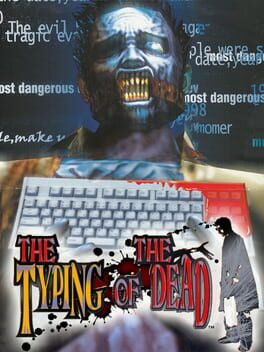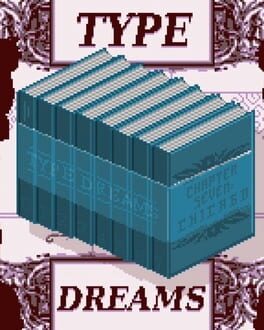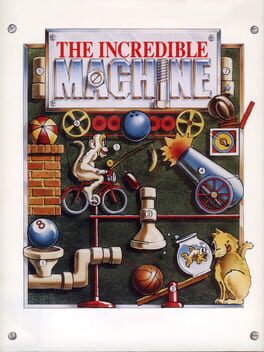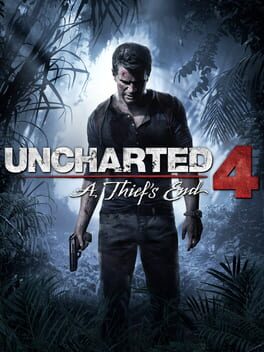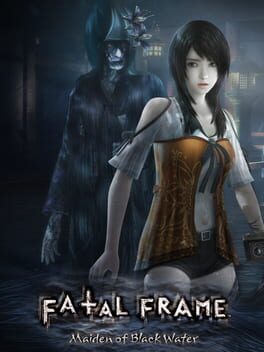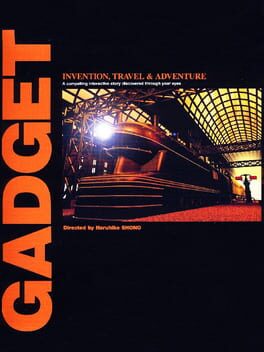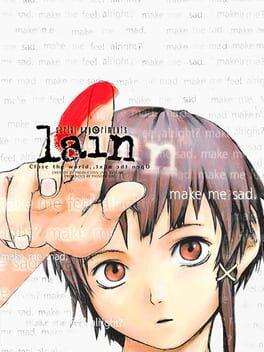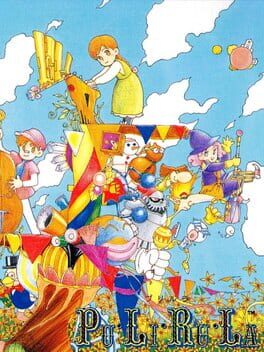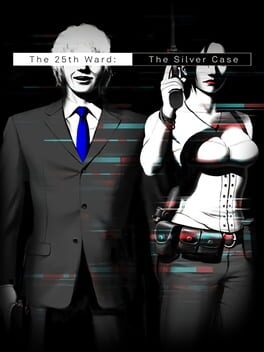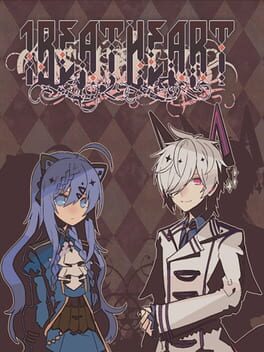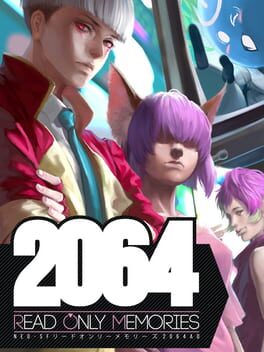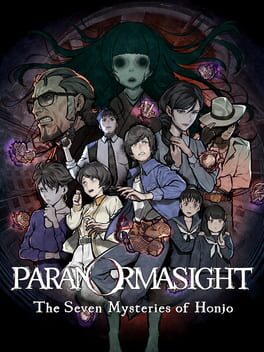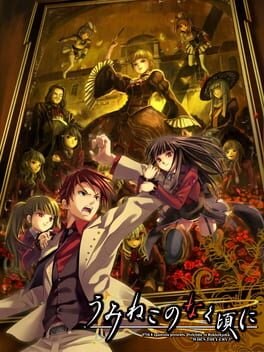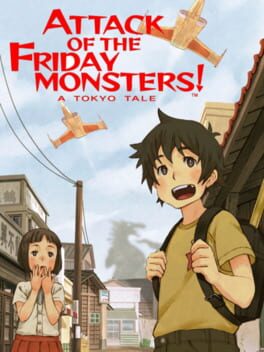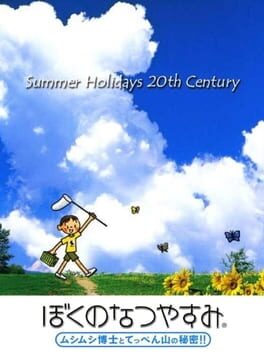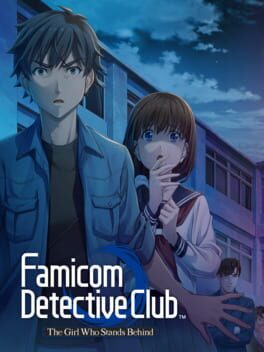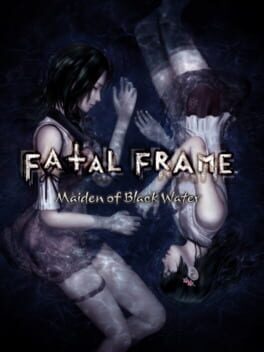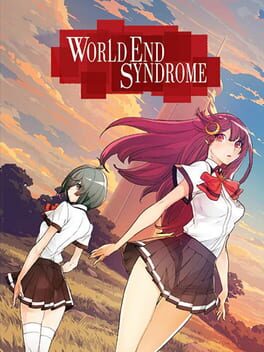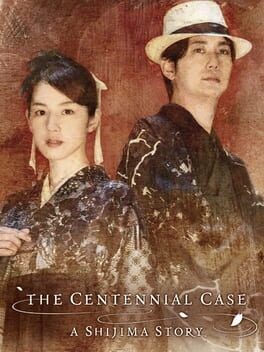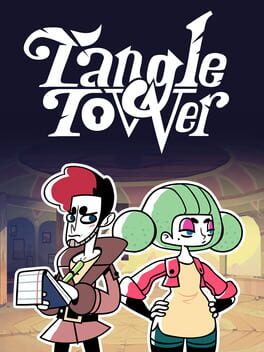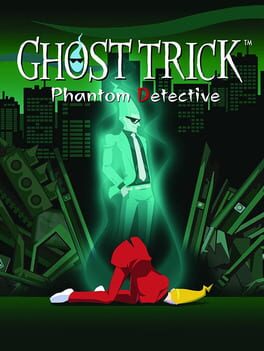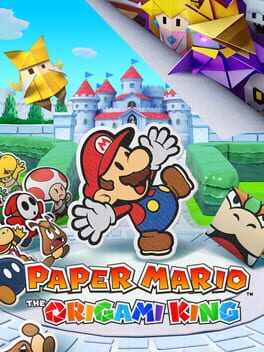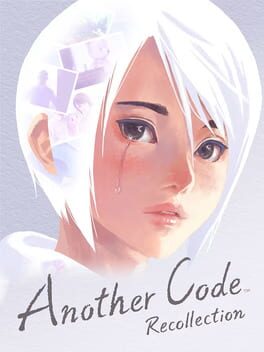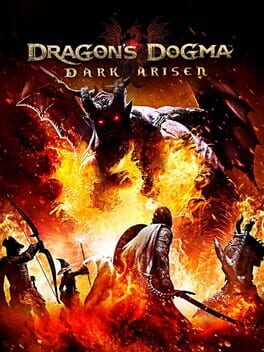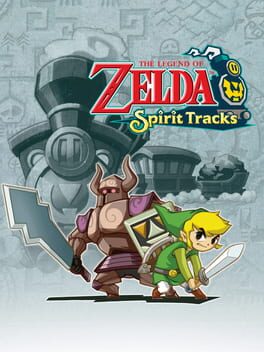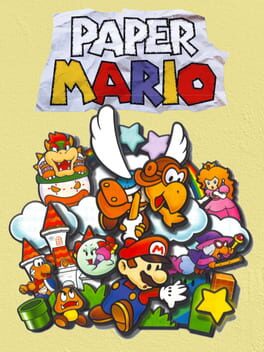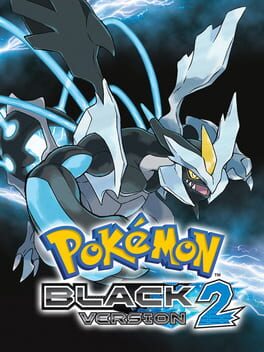BertKnot
129 reviews liked by BertKnot
This review contains spoilers
Considered as an arlesian, Final Fantasy VII: Remake is a title that proposes a rewriting of the original title, with some in-depth modifications, giving it the quality of a rebuild, as the Japanese like to do. Beyond the somewhat disingenuous marketing, this is a game that never deviates from its ambition to tell a different story from its elder, which is perceptible from the first hours. Thus, the Remake, the first of a trilogy, adapts the entire Midgarian part, which is only a small fraction of the base game – it doesn't even finish Disc 1, as it stops at the first act. Such an undertaking may be surprising and suggests that the team is trying to capitalise on the collective memory around Final Fantasy VII, i.e. the beginning of the game and the final battle against Sephiroth against the backdrop of the meteorite. Exit the rest of the references, which, if present, will largely pass over the average player. In this respect, the lack of understanding of people around the scenes with Zack is indicative of the fact that a large part of the audience has completely forgotten this part of the story, which we originally learn in Disc 3. The presence of Zack in the Remake, due to the annihilation of the Whispers, is a clear sign that we are in parallel plots. The discursive interest of such an approach is not insignificant and allows us to reflect on the power of fiction and its reception by the public – especially since we are talking about a title that is particularly adored by the community.
Nevertheless, it is unfortunate that the narrative form of this rewrite leaves something to be desired: all direct revelations occur in Chapter 18, with a certain lack of finesse. Of course, it was obvious from the start that the Whispers symbolised fate, but the fact that no character makes this assumption before Red XIII is a bit disappointing, if only in terms of meta-narrative. Even more damaging is the extension of the Midgarian act without any real willingness to set up the city as a character – in the gothic sense. The Midgarian geography, interesting as it is on paper, is never exploited in game. There is a strong dichotomy between the universe and the way it is integrated into the gameplay. The various slums all look the same and are particularly cramped, so that it is both difficult to move around and impossible to have an emotional attachment of your own. The inhabitants also fail to create empathy, as the game fails to put them in the foreground. The scenes of destruction, too numerous, lose the evocative power of Chapter 12, especially since the level design does not seem to be altered by the surrounding destruction.
This does not prevent the game from succeeding in developing secondary characters and giving them a nuanced texture. The case of Jessie is probably the most evocative and the character is a success of writing from start to finish, thanks to the contrast she generates with Cloud, put in a deferential and ridiculous position, which was the characteristic of the original game. Some of the scenes have a rare poetic quality to them and indicate that there is real skill in the design of these sequences. Nevertheless, the game never manages to connect these elements together, as if they had been written independently. This is a pity and a shame for the overall coherence, which suffers particularly. Indeed, the fast-paced, scene-by-scene pacing can work in the original Final Fantasy VII, because the Midgarian arc is very short, so that it's easy to accept writing clichés. But for a game that's close to 25 hours, the lack of transition and care in the themes tackled (Shinra's internal contradictions, the personality of each slum, the difficulty of living there, etc.) is problematic. To dilate the original experience is to create a set of narrative holes that need to be filled and the Remake never manages to do this properly.
Instead and nonetheless, it excels in its combat system, which is of a rare richness. Wanting to attempt a middle ground between the turn-based JRPG and the modern ARPG, the title opts for real-time combat with a tactical pause and a dynamic ATB. The choice is an obvious success, as it manages to set a similar pace to turn-based combat, with defensive and aggressive sequences following one another. The diversity comes from the emphasis on certain phases of this cycle: some bosses will be punished by defensive gameplay, while it will be possible to be extremely aggressive with others by capitalising on their stagger bar. The characters complement each other extremely well and the result is an exceptional dynamism, which underlines the progress made in the Final Fantasy XV experience.
In the DLC, this combat art is taken to the extreme with Yuffie combining Tifa's speed and Cloud's DPS, as well as a variety in her elemental attacks, thanks to her ninjutsu. The character, while fragile, draws strength from an aggressive gameplay, which keeps a high pressure on enemies and can get out of situations with her powerful dodge. The flexibility described here is further enhanced by the use of materia, which allows a character to be swayed towards a particular archetype: thus, it is entirely possible to play a Tifa who focuses solely on the stagger gauge, but she can also take a more mixed approach by doing heavy damage as well. Similarly, Aerith can be built as the main DPS or as a support character. The finesse of the combat system, which is certainly not aimed at the general public, is surprising, as it stands in contrast to the AAA approach to storytelling and worldbuilding; it's as if gameplay and storytelling are completely disassociated and only communicate in rare moments (inevitably, Chapter 9, by far the climax of the game).
Final Fantasy VII: Remake and its Intergrade episode are a very interesting attempt to rewrite the fable of the original game, without ever making it obsolete – instead, you need to have done the original game to enjoy the experience, so the game fails to target any particular audience. These are structurally flawed games: while the experience is still enjoyable during the play session, one can only be frustrated when stepping back: how can you not wish the game was more than that? Its potential was so great.
Nevertheless, it is unfortunate that the narrative form of this rewrite leaves something to be desired: all direct revelations occur in Chapter 18, with a certain lack of finesse. Of course, it was obvious from the start that the Whispers symbolised fate, but the fact that no character makes this assumption before Red XIII is a bit disappointing, if only in terms of meta-narrative. Even more damaging is the extension of the Midgarian act without any real willingness to set up the city as a character – in the gothic sense. The Midgarian geography, interesting as it is on paper, is never exploited in game. There is a strong dichotomy between the universe and the way it is integrated into the gameplay. The various slums all look the same and are particularly cramped, so that it is both difficult to move around and impossible to have an emotional attachment of your own. The inhabitants also fail to create empathy, as the game fails to put them in the foreground. The scenes of destruction, too numerous, lose the evocative power of Chapter 12, especially since the level design does not seem to be altered by the surrounding destruction.
This does not prevent the game from succeeding in developing secondary characters and giving them a nuanced texture. The case of Jessie is probably the most evocative and the character is a success of writing from start to finish, thanks to the contrast she generates with Cloud, put in a deferential and ridiculous position, which was the characteristic of the original game. Some of the scenes have a rare poetic quality to them and indicate that there is real skill in the design of these sequences. Nevertheless, the game never manages to connect these elements together, as if they had been written independently. This is a pity and a shame for the overall coherence, which suffers particularly. Indeed, the fast-paced, scene-by-scene pacing can work in the original Final Fantasy VII, because the Midgarian arc is very short, so that it's easy to accept writing clichés. But for a game that's close to 25 hours, the lack of transition and care in the themes tackled (Shinra's internal contradictions, the personality of each slum, the difficulty of living there, etc.) is problematic. To dilate the original experience is to create a set of narrative holes that need to be filled and the Remake never manages to do this properly.
Instead and nonetheless, it excels in its combat system, which is of a rare richness. Wanting to attempt a middle ground between the turn-based JRPG and the modern ARPG, the title opts for real-time combat with a tactical pause and a dynamic ATB. The choice is an obvious success, as it manages to set a similar pace to turn-based combat, with defensive and aggressive sequences following one another. The diversity comes from the emphasis on certain phases of this cycle: some bosses will be punished by defensive gameplay, while it will be possible to be extremely aggressive with others by capitalising on their stagger bar. The characters complement each other extremely well and the result is an exceptional dynamism, which underlines the progress made in the Final Fantasy XV experience.
In the DLC, this combat art is taken to the extreme with Yuffie combining Tifa's speed and Cloud's DPS, as well as a variety in her elemental attacks, thanks to her ninjutsu. The character, while fragile, draws strength from an aggressive gameplay, which keeps a high pressure on enemies and can get out of situations with her powerful dodge. The flexibility described here is further enhanced by the use of materia, which allows a character to be swayed towards a particular archetype: thus, it is entirely possible to play a Tifa who focuses solely on the stagger gauge, but she can also take a more mixed approach by doing heavy damage as well. Similarly, Aerith can be built as the main DPS or as a support character. The finesse of the combat system, which is certainly not aimed at the general public, is surprising, as it stands in contrast to the AAA approach to storytelling and worldbuilding; it's as if gameplay and storytelling are completely disassociated and only communicate in rare moments (inevitably, Chapter 9, by far the climax of the game).
Final Fantasy VII: Remake and its Intergrade episode are a very interesting attempt to rewrite the fable of the original game, without ever making it obsolete – instead, you need to have done the original game to enjoy the experience, so the game fails to target any particular audience. These are structurally flawed games: while the experience is still enjoyable during the play session, one can only be frustrated when stepping back: how can you not wish the game was more than that? Its potential was so great.
'Three years had passed. Five years had passed, and still the trees remained with their roots spread out on the bottom of the water. It looked almost as if they were still alive now. Ohina thought to herself; in those days my legs were still strong. My eyes could still see far.'
– Michiko Ishimure, Tenko, 1997 (tr. Bruce Allen).
The post-war years in Japan were accompanied by an ideological shift in the ideas of work and family, with the development of the sarariiman myth. The ideal household, promoted by the Japanese government, was one in which the wife took care of the housework and the children's education, while the husband provided for the family's economic needs. This dream was made possible by the employment conditions of the 1960s and 1970s, when the average worker could expect to spend their entire career with the same company. Representations of the Japanese sarariiman have largely evolved over time, making him both an archetype of ideal masculinity through his loyalty to his employer and his sacrifice for his family (kigyō senshi, corporate warrior). At the same time, other representations emphasise his submissiveness, in line with the westernisation of Japanese culture [1].
And every morning the door closes
The collapse of the economic bubble in the 1990s shattered this ideal, weakening the labour market and the salaried middle class [2]. The destruction of this family harmony, based on a patriarchal concept of sacrifice, led to the dysfunction of Japanese households and the gradual disappearance of fathers from the family unit. The generation born after the 1970s had no memory of the economic miracle of previous decades and found themselves thrust into a world where inequalities were apparent from school and career prospects were mediocre at best. Authority figures were viewed with suspicion and contempt, including the government, teachers and parents. They are said to have failed in their role as guardians: teachers are portrayed as incompetent or murderers, politicians as indifferent to misery and colluding to steal public money, while fathers resign and mothers weep at their powerlessness [3].
The destruction of traditional masculinity, which is still struggling to build a new mythology, has been followed by a reassessment of the place of women, who are regarded as the driving force for Japan's economic recovery and the bulwark against demographic decline. Unsurprisingly, Shinzo Abe's economic programme has focused heavily on the role of women, both as workers and as mothers. Yet Abenomics have failed to transform the labour market environment: government coalitions have been largely conservative, and measures for women have been anemic at best [4]. What remains is a vain discourse to encourage reproduction – despite the economic conditions hardly being met for raising a child – which is reflected in cultural production.
Undoing ikumen in post-Abe Japan
The overrepresentation of motherhood, however, should not obscure the transformations of fatherhood in the 2000s and 2010s. Xenoblade Chronicles 3: Future Redeemed is a striking example as it deals directly with this issue, whereas the original game looked at the question of reproduction and family in a broader way [5]. The heroes of the first two games return, each embodying a different vision of masculinity. Shulk retains his candour while appearing more calm and disciplined. He represents a self-controlled masculinity driven by both elegance and intellect, in the style of the erudite warriors of pre-modern Asia. Rex is much rougher, constantly struggling to find a way to express his feelings and frustrations, despite his good intentions. In some ways, his development is reminiscent of that of Ryōta Nonomiya in Hirokazu Kore-eda's Soshite chichi ni naru (2013), an architect who is unable to provide emotional comfort to his family. Confronted with the way Shulk interacts with Nikol, Rex finds a new harmony with Glimmer, full of empathy and love.
Perhaps the most important aspect of these relationships is that their nature remains implicit. Many of the reminiscent and contemplative passages in Future Redeemed rely on knowledge of the franchise, but the theme of fatherhood runs throughout the DLC. Ultimately, the heroes' distance from their children is a response to the debates surrounding ikumen, a term used to describe fathers who are involved in raising their children in order to make them appear 'cool'. The ideological programme of Abe's Japan relied heavily on this imaginary to encourage fathers to participate in the household, but the figure of the ikumen has been widely criticised for giving men a nice label, even though they contribute to the dysfunction of both the domestic economy and their working environment [6].
The figure of the ikumen can be understood as a way for fathers to make themselves useful somewhere and gain recognition from their peers, a way to find a place to belong (ibasho) after being ejected from both the family unit and the corporate space. Future Redeemed responds to this sociological question in the same way as several local associations have done, through the figure of the ikimen, men who decide to foster communities of solidarity in the same way that they would look after their children [7]. Shulk and Rex, thanks to their experience, become the tutelary figures of the Liberators and Colony 9, but they are more interested in being mentors than leaders. Like the base game, Future Redeemed focuses on building bonds between the various members of the community until their resilience is no longer in doubt. As the various characters point out to Matthew, the virtue of a leader is to bring people together when necessary, not to control their lives. Through the various side-quests, the inhabitants of Colony 9 also gain texture and individuality, autonomy and confidence – more so than in the base game, thanks to a sparser cast.
Maybe tomorrow
There is an optimistic melancholy to Future Redeemed, between the series' various iconic locations reduced to lonely ruins and the forward-looking language of the characters. Like Tetsuya Takahashi's other games, the DLC shines by magnifying the ties that bind individuals, variations on the theme of friendship, love and togetherness – lessons that must be carried beyond the game. A single existence is but a drop in the ocean of human history. Civilisations, buildings, masterpieces, passions, dreams and memories can vanish in an instant, but there remains an explicit duty to cherish the past, not in blind adoration, but in preparation for the future. Future Redeemed constantly refuses to elevate Shulk and Rex onto a pedestal: they are already fading figures, as their injuries attest. Even A, for all her unwavering calm and penetrating gaze, chooses to remain outside the life that Colony 9 and the Liberators have decided to cherish; not because she is without compassion for the survivors, but because she knows – and this is her legacy – that the future belongs to them alone.
As Xeno veterans know, every story has an ending, and not all sequels need to be told. Looking back at Lost Jerusalem and thinking about building a better world is poignant, but this is the everyday story. Fighting for a fairer and more humane world. It may take generations, but the important thing is to keep dreaming and struggling for it, because there is nothing more tragic than an existence without hope, even when darkness seems to engulf everything. Of course, there is something idealistic and simplistic about this statement, but Future Redeemed, like the base game Xenogears (1998) or Xenosaga (2002-2006), leaves room for misery and sadness. Inequality is part of every society, and Takahashi has no illusions about the ghosts that will always roam the Rhadamanthus of the future. This is how Future Redeemed concludes the epic of the Xenoblade Chronicles, just as Episode III: Also sprach Zarathustra (2006) invited one to close their eyes for a while, until the light of hope reappears, maybe tomorrow. In a way, Future Redeemed is just an open door. Its more meticulous progression with Affinity Points, its more fluid exploration thanks to numerous ergonomic additions, and its gameplay designed around accessories rather than classes all point to rich ideas for Monolith Soft's next projects.
I may still be around to see what paths they take.
Maybe I won't.
I will sleep a while, until the dawn wakes me up again...
I still believe... come what may...
__________
[1] Annette Schad-Seifert, 'Samurai and Sarariiman: The Discourse on Masculinity in Modern Japan', in Arne Holzhausen (ed.), Can Japan Globalize? Studies on Japan's Changing Political Economy and the Process of Globalization, Springer, Berlin, 2001, pp. 206-208.
[2] Some contextual details are provided in my reviews of Kaze no NOTAM (1997) and Power Shovel (1999).
[3] This is a rather simplified picture of the cultural representations of the 1990s and 2000s, but they occupy an important part of successful audiovisual production in Japan. On the topic, see Shuk-ting Kinnia Yau, 'Bad Father and Good Mother: The Changing Image of Masculinity in Post-Bubble-Economy Japan', in David G. Hebert (ed.), International Perspectives on Translation, Education and Innovation in Japanese and Korean Societies, Springer, New York, 2018, pp. 243-253.
[4] Mark Crawford, 'Abe’s Womenomics Policy, 2013-2020: Tokenism, Gradualism, or Failed Strategy?', in The Asia-Pacific Journal, vol. 19, no. 4-4, 2021.
[5] On the topic, see my review of Xenoblade Chronicles 3 (2022).
[6] In particular, wives and employers are very suspicious of the ikumen modoki, the father who prides himself on being involved in running the household and bringing up the children, but in reality makes no effort at all. He builds a positive image of himself on his wife's efforts and uses the household as an excuse to shirk his professional responsibilities. The yarisugi ikumen, the man who is overly proactive in his domestic involvement, is equally feared by women, both because he often disrupts household routines and wastes time, unnecessarily burdening his spouse with additional work. On the topic, see Nicholas Michael Feinig, Rearing the Family, Moving Society: Rethinking Gender, Kinship, and Work through Japan’s Fathering Movement, PhD thesis, University of Toronto, 2020, pp. 99-134.
[7] This figure is also subject to specific criticisms, notably the contamination of spaces intended for women by a corporatist and hierarchical masculinity, and the fact that these groups are more places for fathers to socialise than spaces for improving local community life; nevertheless, they are a new ibasho for men, outside the workplace. On the topic, see Nicholas Michael Feinig, op. cit., pp. 230-276.
– Michiko Ishimure, Tenko, 1997 (tr. Bruce Allen).
The post-war years in Japan were accompanied by an ideological shift in the ideas of work and family, with the development of the sarariiman myth. The ideal household, promoted by the Japanese government, was one in which the wife took care of the housework and the children's education, while the husband provided for the family's economic needs. This dream was made possible by the employment conditions of the 1960s and 1970s, when the average worker could expect to spend their entire career with the same company. Representations of the Japanese sarariiman have largely evolved over time, making him both an archetype of ideal masculinity through his loyalty to his employer and his sacrifice for his family (kigyō senshi, corporate warrior). At the same time, other representations emphasise his submissiveness, in line with the westernisation of Japanese culture [1].
And every morning the door closes
The collapse of the economic bubble in the 1990s shattered this ideal, weakening the labour market and the salaried middle class [2]. The destruction of this family harmony, based on a patriarchal concept of sacrifice, led to the dysfunction of Japanese households and the gradual disappearance of fathers from the family unit. The generation born after the 1970s had no memory of the economic miracle of previous decades and found themselves thrust into a world where inequalities were apparent from school and career prospects were mediocre at best. Authority figures were viewed with suspicion and contempt, including the government, teachers and parents. They are said to have failed in their role as guardians: teachers are portrayed as incompetent or murderers, politicians as indifferent to misery and colluding to steal public money, while fathers resign and mothers weep at their powerlessness [3].
The destruction of traditional masculinity, which is still struggling to build a new mythology, has been followed by a reassessment of the place of women, who are regarded as the driving force for Japan's economic recovery and the bulwark against demographic decline. Unsurprisingly, Shinzo Abe's economic programme has focused heavily on the role of women, both as workers and as mothers. Yet Abenomics have failed to transform the labour market environment: government coalitions have been largely conservative, and measures for women have been anemic at best [4]. What remains is a vain discourse to encourage reproduction – despite the economic conditions hardly being met for raising a child – which is reflected in cultural production.
Undoing ikumen in post-Abe Japan
The overrepresentation of motherhood, however, should not obscure the transformations of fatherhood in the 2000s and 2010s. Xenoblade Chronicles 3: Future Redeemed is a striking example as it deals directly with this issue, whereas the original game looked at the question of reproduction and family in a broader way [5]. The heroes of the first two games return, each embodying a different vision of masculinity. Shulk retains his candour while appearing more calm and disciplined. He represents a self-controlled masculinity driven by both elegance and intellect, in the style of the erudite warriors of pre-modern Asia. Rex is much rougher, constantly struggling to find a way to express his feelings and frustrations, despite his good intentions. In some ways, his development is reminiscent of that of Ryōta Nonomiya in Hirokazu Kore-eda's Soshite chichi ni naru (2013), an architect who is unable to provide emotional comfort to his family. Confronted with the way Shulk interacts with Nikol, Rex finds a new harmony with Glimmer, full of empathy and love.
Perhaps the most important aspect of these relationships is that their nature remains implicit. Many of the reminiscent and contemplative passages in Future Redeemed rely on knowledge of the franchise, but the theme of fatherhood runs throughout the DLC. Ultimately, the heroes' distance from their children is a response to the debates surrounding ikumen, a term used to describe fathers who are involved in raising their children in order to make them appear 'cool'. The ideological programme of Abe's Japan relied heavily on this imaginary to encourage fathers to participate in the household, but the figure of the ikumen has been widely criticised for giving men a nice label, even though they contribute to the dysfunction of both the domestic economy and their working environment [6].
The figure of the ikumen can be understood as a way for fathers to make themselves useful somewhere and gain recognition from their peers, a way to find a place to belong (ibasho) after being ejected from both the family unit and the corporate space. Future Redeemed responds to this sociological question in the same way as several local associations have done, through the figure of the ikimen, men who decide to foster communities of solidarity in the same way that they would look after their children [7]. Shulk and Rex, thanks to their experience, become the tutelary figures of the Liberators and Colony 9, but they are more interested in being mentors than leaders. Like the base game, Future Redeemed focuses on building bonds between the various members of the community until their resilience is no longer in doubt. As the various characters point out to Matthew, the virtue of a leader is to bring people together when necessary, not to control their lives. Through the various side-quests, the inhabitants of Colony 9 also gain texture and individuality, autonomy and confidence – more so than in the base game, thanks to a sparser cast.
Maybe tomorrow
There is an optimistic melancholy to Future Redeemed, between the series' various iconic locations reduced to lonely ruins and the forward-looking language of the characters. Like Tetsuya Takahashi's other games, the DLC shines by magnifying the ties that bind individuals, variations on the theme of friendship, love and togetherness – lessons that must be carried beyond the game. A single existence is but a drop in the ocean of human history. Civilisations, buildings, masterpieces, passions, dreams and memories can vanish in an instant, but there remains an explicit duty to cherish the past, not in blind adoration, but in preparation for the future. Future Redeemed constantly refuses to elevate Shulk and Rex onto a pedestal: they are already fading figures, as their injuries attest. Even A, for all her unwavering calm and penetrating gaze, chooses to remain outside the life that Colony 9 and the Liberators have decided to cherish; not because she is without compassion for the survivors, but because she knows – and this is her legacy – that the future belongs to them alone.
As Xeno veterans know, every story has an ending, and not all sequels need to be told. Looking back at Lost Jerusalem and thinking about building a better world is poignant, but this is the everyday story. Fighting for a fairer and more humane world. It may take generations, but the important thing is to keep dreaming and struggling for it, because there is nothing more tragic than an existence without hope, even when darkness seems to engulf everything. Of course, there is something idealistic and simplistic about this statement, but Future Redeemed, like the base game Xenogears (1998) or Xenosaga (2002-2006), leaves room for misery and sadness. Inequality is part of every society, and Takahashi has no illusions about the ghosts that will always roam the Rhadamanthus of the future. This is how Future Redeemed concludes the epic of the Xenoblade Chronicles, just as Episode III: Also sprach Zarathustra (2006) invited one to close their eyes for a while, until the light of hope reappears, maybe tomorrow. In a way, Future Redeemed is just an open door. Its more meticulous progression with Affinity Points, its more fluid exploration thanks to numerous ergonomic additions, and its gameplay designed around accessories rather than classes all point to rich ideas for Monolith Soft's next projects.
I may still be around to see what paths they take.
Maybe I won't.
I will sleep a while, until the dawn wakes me up again...
I still believe... come what may...
__________
[1] Annette Schad-Seifert, 'Samurai and Sarariiman: The Discourse on Masculinity in Modern Japan', in Arne Holzhausen (ed.), Can Japan Globalize? Studies on Japan's Changing Political Economy and the Process of Globalization, Springer, Berlin, 2001, pp. 206-208.
[2] Some contextual details are provided in my reviews of Kaze no NOTAM (1997) and Power Shovel (1999).
[3] This is a rather simplified picture of the cultural representations of the 1990s and 2000s, but they occupy an important part of successful audiovisual production in Japan. On the topic, see Shuk-ting Kinnia Yau, 'Bad Father and Good Mother: The Changing Image of Masculinity in Post-Bubble-Economy Japan', in David G. Hebert (ed.), International Perspectives on Translation, Education and Innovation in Japanese and Korean Societies, Springer, New York, 2018, pp. 243-253.
[4] Mark Crawford, 'Abe’s Womenomics Policy, 2013-2020: Tokenism, Gradualism, or Failed Strategy?', in The Asia-Pacific Journal, vol. 19, no. 4-4, 2021.
[5] On the topic, see my review of Xenoblade Chronicles 3 (2022).
[6] In particular, wives and employers are very suspicious of the ikumen modoki, the father who prides himself on being involved in running the household and bringing up the children, but in reality makes no effort at all. He builds a positive image of himself on his wife's efforts and uses the household as an excuse to shirk his professional responsibilities. The yarisugi ikumen, the man who is overly proactive in his domestic involvement, is equally feared by women, both because he often disrupts household routines and wastes time, unnecessarily burdening his spouse with additional work. On the topic, see Nicholas Michael Feinig, Rearing the Family, Moving Society: Rethinking Gender, Kinship, and Work through Japan’s Fathering Movement, PhD thesis, University of Toronto, 2020, pp. 99-134.
[7] This figure is also subject to specific criticisms, notably the contamination of spaces intended for women by a corporatist and hierarchical masculinity, and the fact that these groups are more places for fathers to socialise than spaces for improving local community life; nevertheless, they are a new ibasho for men, outside the workplace. On the topic, see Nicholas Michael Feinig, op. cit., pp. 230-276.
DK: King of Swing
2005
Played during the Backloggd’s Game of the Week (19th Sep. – 25th Sep., 2023).
The 1980s and 1990s saw a significant evolution in the practice of climbing in Japan, with the newfound popularity of free climbing correlating with environmental concerns. It was the widespread construction of climbing gyms at the end of the century that cemented this development, compensating for the poor rock durability of Japan's mountain ranges – Osaka's City Rock Gym was the first to be established in 1989. The practice of free climbing spread throughout Japanese society, creating a veritable subculture with its own codes, traditions and rituals [1], while Japanese sports institutions promoted the discipline in various competitions [2]. This has culminated in the inclusion of sport climbing in the Tokyo 2020 Olympic Games.
Cultural production followed suit: the first high-profile production was Baku Yumemakura's Kamigami no itadaki (1997) and its manga adaptation in 2000. Shinichi Ishizuka's Gaku: Minna no yama (2003) and Shinichi Sakamoto's Kōko no hito (2007) followed in its wake, before the more adolescent slice-of-life works of recent years. Burabura Donkey seems to fit into this trend: Atsushi Kaneko explained that it was the most natural concept for him to experiment with the use of the GBA's L and R buttons [3]. The project was originally intended to use 3D assets and original characters, but Nintendo pushed for 2D and the inclusion of the Donkey Kong characters. The project was consistent with Nintendo's experimental philosophy regarding its hardware and its desire to create a tangible link between the player and the gaming experience.
Burabura Donkey demonstrates the strength of the climbing concept, but also the limitations of such a system. The title does not quite manage to balance out its difficulty due to some uninspired level design. While the physics of spinning and throwing are well recreated, the game is rather cumbersome when the player is facing enemies, and there are times when they can be caught off guard by erratic movements and permissive hitboxes. Burabura Donkey leans heavily towards the arcade variety, with timed challenges to collect Crystal Coconuts and missions in the bonus mode adding to the difficulty of the title. Nevertheless, the Adventure mode provides a good opportunity for players to familiarise themselves with Donkey Kong's movements, a necessity as the title tends to be rather painful on the fingers as the buttons have to be held down for long periods of time.
Although the concept is fresh, Burabura Donkey suffers from contradictory ideas. The presence of enemies and bosses serves to mimic the progression of Donkey Kong Country, but is sometimes superfluous or contrived. The bosses all explore different ideas, attempting to use the various concepts introduced in previous levels – the boulders Donkey Kong can grab or the bombs he can throw – but the execution is often rather awkward: the fight against Davy Bones is particularly slow and suffers greatly from the complexity of the controls. Paon's concept is solid, however, and despite disappointing sales in Japan – Burabura Donkey was a GBA exclusive – Nintendo seems to have been satisfied enough to commission Donkey Kong: Jungle Climber (2007) for the DS.
__________
[1] On the success of free climbing and the creation of a homosocial and hierarchical subculture, see Wolfram Manzenreiter, 'No pain, no gain: embodied masculinities and lifestyle sport in Japan', in Contemporary Japan, vol. 25, no. 2, 2013, pp. 215-236.
[2] In particular, following the announcement in 2016 of the inclusion of climbing in the 2020 Olympic Games, the joint work of the Ministry of Education, Culture, Sports, Science and Technology (Monbu-kagaku-shō), the Japan Sport Council (Nihon supōtsu shinkō sentā), and the Japan Mountaineering and Sport Climbing Association (Nihon sangaku supōtsukuraimingu kyōkai), has led to the inclusion of climbing in high-level sports curricula, as well as the construction and renovation of facilities needed to prepare athletes. On the topic, see Ruizhi Chen, Yuan Li, 'Development and Revelation of Japanese Sport Climbing', in Advances in Social Science, Education and Humanities Research, vol. 571, 2021, pp. 873-878.
[3] '『ぶらぶらドンキー』開発スタッフインタビュー', on nintendo.co.jp, consulted on 11th June 2007.
The 1980s and 1990s saw a significant evolution in the practice of climbing in Japan, with the newfound popularity of free climbing correlating with environmental concerns. It was the widespread construction of climbing gyms at the end of the century that cemented this development, compensating for the poor rock durability of Japan's mountain ranges – Osaka's City Rock Gym was the first to be established in 1989. The practice of free climbing spread throughout Japanese society, creating a veritable subculture with its own codes, traditions and rituals [1], while Japanese sports institutions promoted the discipline in various competitions [2]. This has culminated in the inclusion of sport climbing in the Tokyo 2020 Olympic Games.
Cultural production followed suit: the first high-profile production was Baku Yumemakura's Kamigami no itadaki (1997) and its manga adaptation in 2000. Shinichi Ishizuka's Gaku: Minna no yama (2003) and Shinichi Sakamoto's Kōko no hito (2007) followed in its wake, before the more adolescent slice-of-life works of recent years. Burabura Donkey seems to fit into this trend: Atsushi Kaneko explained that it was the most natural concept for him to experiment with the use of the GBA's L and R buttons [3]. The project was originally intended to use 3D assets and original characters, but Nintendo pushed for 2D and the inclusion of the Donkey Kong characters. The project was consistent with Nintendo's experimental philosophy regarding its hardware and its desire to create a tangible link between the player and the gaming experience.
Burabura Donkey demonstrates the strength of the climbing concept, but also the limitations of such a system. The title does not quite manage to balance out its difficulty due to some uninspired level design. While the physics of spinning and throwing are well recreated, the game is rather cumbersome when the player is facing enemies, and there are times when they can be caught off guard by erratic movements and permissive hitboxes. Burabura Donkey leans heavily towards the arcade variety, with timed challenges to collect Crystal Coconuts and missions in the bonus mode adding to the difficulty of the title. Nevertheless, the Adventure mode provides a good opportunity for players to familiarise themselves with Donkey Kong's movements, a necessity as the title tends to be rather painful on the fingers as the buttons have to be held down for long periods of time.
Although the concept is fresh, Burabura Donkey suffers from contradictory ideas. The presence of enemies and bosses serves to mimic the progression of Donkey Kong Country, but is sometimes superfluous or contrived. The bosses all explore different ideas, attempting to use the various concepts introduced in previous levels – the boulders Donkey Kong can grab or the bombs he can throw – but the execution is often rather awkward: the fight against Davy Bones is particularly slow and suffers greatly from the complexity of the controls. Paon's concept is solid, however, and despite disappointing sales in Japan – Burabura Donkey was a GBA exclusive – Nintendo seems to have been satisfied enough to commission Donkey Kong: Jungle Climber (2007) for the DS.
__________
[1] On the success of free climbing and the creation of a homosocial and hierarchical subculture, see Wolfram Manzenreiter, 'No pain, no gain: embodied masculinities and lifestyle sport in Japan', in Contemporary Japan, vol. 25, no. 2, 2013, pp. 215-236.
[2] In particular, following the announcement in 2016 of the inclusion of climbing in the 2020 Olympic Games, the joint work of the Ministry of Education, Culture, Sports, Science and Technology (Monbu-kagaku-shō), the Japan Sport Council (Nihon supōtsu shinkō sentā), and the Japan Mountaineering and Sport Climbing Association (Nihon sangaku supōtsukuraimingu kyōkai), has led to the inclusion of climbing in high-level sports curricula, as well as the construction and renovation of facilities needed to prepare athletes. On the topic, see Ruizhi Chen, Yuan Li, 'Development and Revelation of Japanese Sport Climbing', in Advances in Social Science, Education and Humanities Research, vol. 571, 2021, pp. 873-878.
[3] '『ぶらぶらドンキー』開発スタッフインタビュー', on nintendo.co.jp, consulted on 11th June 2007.
Played during the Backloggd’s Game of the Week (12th Sep. – 18th Sep., 2023).
Often described as one of the best games for improving typing skills, The Typing of the Dead takes its cue from existing software, while adding a fresh twist with its rail shooter heritage and quirky humour. Although typing software has been available to the general public since the early 1980s, its form has always been fairly rigid, often using the figure of a real-life teacher – Mavis Beacon became a familiar figure in schools and among American children in the 1990s. Those aimed at a more childish audience certainly made use of well-known mascots, such as Typing is a Ball, Charlie Brown (1985), or claimed to be adventure games, such as Granny's Garden (1983). A decade later, The Typing of the Dead was a seriously addictive title that took full advantage of its arcade nature.
While the title starts off in an almost academic manner with its Training Mode, which teaches the home position to promote effective touch-typing, the game leans immediately towards the silly approach of The House of the Dead 2's (1998) script, with the voice acting as ridiculous as ever and a gothic horror that hardly takes itself seriously with the Dreamcast and keyboard equipment of the characters. The first words the player encounters are quite simple and short, but the difficulty increases until the zombies have to be felled with idioms that are about twenty characters long. The expressions chosen are reminiscent of the Phrases in Wheel of Fortune (1975) and add to the absurd atmosphere of the title. Their juxtaposition – for example, 'It's only a job', 'Surgical knife' and 'Hard luck woman' – also mimics the puns in the Japanese version, which constantly plays with homophonic kanji: for example, 愛だは for the 間は locution.
The Typing of the Dead proves to be a particularly well-honed title that is hard not to like. The difficulty curve is very accessible, but offers a real challenge on the highest difficulties, testing accuracy, reflexes and endurance – which the player can further pursue in the Drill Mode. It is a shame, however, that the selection of expressions, apart from those using special characters, is primarily a matter of translating the absurdity of Japanese puns rather than a genuine attempt to improve performance on certain parts of the keyboard: the game does identify the keys with which the player has the most difficulty, but there is no dedicated mode to improve specific areas such as using a single hand or words typed only on the upper row. Nevertheless, The Typing of the Dead is an effective, charming game that delivers exactly what its concept suggests.
Often described as one of the best games for improving typing skills, The Typing of the Dead takes its cue from existing software, while adding a fresh twist with its rail shooter heritage and quirky humour. Although typing software has been available to the general public since the early 1980s, its form has always been fairly rigid, often using the figure of a real-life teacher – Mavis Beacon became a familiar figure in schools and among American children in the 1990s. Those aimed at a more childish audience certainly made use of well-known mascots, such as Typing is a Ball, Charlie Brown (1985), or claimed to be adventure games, such as Granny's Garden (1983). A decade later, The Typing of the Dead was a seriously addictive title that took full advantage of its arcade nature.
While the title starts off in an almost academic manner with its Training Mode, which teaches the home position to promote effective touch-typing, the game leans immediately towards the silly approach of The House of the Dead 2's (1998) script, with the voice acting as ridiculous as ever and a gothic horror that hardly takes itself seriously with the Dreamcast and keyboard equipment of the characters. The first words the player encounters are quite simple and short, but the difficulty increases until the zombies have to be felled with idioms that are about twenty characters long. The expressions chosen are reminiscent of the Phrases in Wheel of Fortune (1975) and add to the absurd atmosphere of the title. Their juxtaposition – for example, 'It's only a job', 'Surgical knife' and 'Hard luck woman' – also mimics the puns in the Japanese version, which constantly plays with homophonic kanji: for example, 愛だは for the 間は locution.
The Typing of the Dead proves to be a particularly well-honed title that is hard not to like. The difficulty curve is very accessible, but offers a real challenge on the highest difficulties, testing accuracy, reflexes and endurance – which the player can further pursue in the Drill Mode. It is a shame, however, that the selection of expressions, apart from those using special characters, is primarily a matter of translating the absurdity of Japanese puns rather than a genuine attempt to improve performance on certain parts of the keyboard: the game does identify the keys with which the player has the most difficulty, but there is no dedicated mode to improve specific areas such as using a single hand or words typed only on the upper row. Nevertheless, The Typing of the Dead is an effective, charming game that delivers exactly what its concept suggests.
Type Dreams
2019
'In a land of clear colours and stories,
In a region of shadowless hours,
Where earth has a garment of glories
And a murmur of musical flowers...’
– Algernon Charles Swinburne, 'Dedication', 1865.
It took me several years to understand my girlfriend's fascination with translation. At first I thought it was an expression of her bilingualism and that it came naturally to her. She liked to compare texts at her desk, with two books open and bookmarked. I remember seeing Jane Austen and Plutarch, T.S. Eliot and Cicero in different editions. One book she kept coming back to was George Steiner's After Babel (1975), which I later took with me. When I was younger, its seven hundred pages frightened me with their complexity, and I kept the volume only as a souvenir: the spine was cracked from heavy use, and some of the pages were slightly worn and yellowed. These marks identified her presence, her aura, her memory.
Understanding is a translation
It was only when I was later writing notes on After Babel that I understood what she valued in translation. It is difficult to capture Steiner's theses, since they do not form a grand, all-encompassing theory, but a key idea – formative for the field of translation studies and comparative literature – is that the communication of information is a secondary part of human discourse. For him, each language colours the individual's relationship to reality in a different way, allowing them to express a situated point of view, an otherness of being. As much as Steiner represented an ideal of the Renaissance man for my girlfriend – and still does, in a way, for me – he was not without his faults. His erudition was often the result of clumsy approximations, where it was more important to keep exploring elsewhere than to specialise.
Through it all, he remained the image of a reader, eager to compare and understand the texts he encountered. My girlfriend loved translating and comparing because, in her illness, she found in it a way of travelling and experiencing spontaneously the rich imagination of texts. Compared to the simple act of reading, translation forces the reader to immerse themselves in the text, to decode its signs, to identify cultural markers and to discover the various references hidden within it. A first glance will reveal expressions and objects that refer to a more or less precise period of time; a closer look will reveal word choices and content that were in use a few decades or centuries earlier; the scansion of the text will also make it possible to delimit a style and influences. Translating means observing and experiencing these elements in order to render them as faithfully as possible into another language, knowing that the result will still be distorted.
Un petit pan de mur jaune and the rock of the Lighthouse
To transcribe is to experience. Certain scenes, conveyed by contemplative narrators, always linger in my mind. In Virginia Woolf's To the Lighthouse (1927), Mrs Ramsey reads extracts from the famous anthology The Oxford Book of English Verse (1900), edited by Arthur T. Quiller-Couch: each passage, chosen a priori at random, resonates with the previous ones, allowing the reader to enter Mrs Ramsey's consciousness and the atmosphere of the house. The way she picks the verses, as if plucking petals, contributes to the strange languor of the moment [1]. In Marcel Proust's À la recherche du temps perdu (1927), the narrator fantasises about his trip to Venice. However, this vision of the Serenissima is largely altered by Proust's own readings [2] and his desire to leave a mark, however subjective, through his literary account.
Type Dreams is fully aware of this artistic and ontological strength, drawing on the aesthetics of the typewriter and transcription to instantiate moments of contemplation in the present moment. KB0 offered a sublime insight into the relationship between the physical act of writing and existence; as such, I will not elaborate on these issues here. However, I would like to point out that, beyond the systems and anachronical Victorian aesthetics that seem to run counter to technological progress, the choice of texts is part of a veritable journey into the history of human production and Richard Hofmeier's mentality. The exercises are like musical études, and their poetic absurdity contrasts strikingly with the more concrete texts. There is something deeply wistful about these meditations on existence, death, love and memory. Just as the narrator of La Recherche instantiates his life in a literary production – to inscribe it in Time – Hofmeier seems to conjure up a malaise and an absence by transcribing texts that evoke this sorrow.
There are imperfections in the texts that remind the player of their humanity, whether due to the author's playfulness or a simple typing error. These deviations from the norm force the player to grasp their mental universe and compare it with their own. The extracts from Plato's Apologia Socratis (4th century BCE) are given in the translation by Miles Burnyeat and Christopher Rowe. A long debate about the translation of the dialogue seeks to determine whether ἀρετή should be understood as 'goodness' or as 'virtue'. Burnyeat and Rowe have argued, on philosophical grounds, that the correct translation is 'goodness' – but there is no consensus on this analysis [3]. Nevertheless, the choice of this version, rather than a translation from the Loeb Classic or that of Thomas G. West, allows Hofmeier to situate the theme of death and memory within his system of thought. These long extracts can be contrasted, for example, with the inclusion of 'Seeking Feelings for Words' by Felipe Carretoni, a confidential Brazilian writer.
And I love you so much
The prose poem is addressed to a significant other, acknowledging their presence and the lessons they have taught the author. 'It has been some time now, love, since you taught me what love is,' the poem ends. There are echoes, deliberate or not, in the text of T. S. Eliot's 'A Dedication to my Wife': 'No peevish winter wind shall chill / No sullen tropic sun shall wither / The roses in the rose-garden which is ours and ours only. / But this dedication is for others to read: / These are private words addressed to you in public' [4]. Carretoni's poem unfolds as the keys are struck, while the surroundings in which the typographer finds themselves slowly change. Starting with the empty, colourless room and the window covered by a light rain, it gradually regains its vibrancy as the player's avatar reappears. The act of writing exorcises the memories of a melancholy love. It is impossible to know what Carretoni and Hofmeier actually mean by this poem, but it hardly matters since the interpretation is left to the reader and player.
Both Apologia Socratis and 'Seeking Feelings for Words' remind me so much of my teenage love and the boundless affection she left me. Sometimes it overflows without knowing where to go: Type Dreams, in its mechanically contemplative approach, channeled that flood by conjuring up the virtues and lessons my first love left me – or what I imagine she left me. Over the past few years, I have spent long hours rereading and transcribing the many letters we exchanged. It was a way of reliving the feelings I had once committed to paper, of instantiating her presence once again. I have not done this for a long time, partly because the tenderness and lost love that surrounds me is painful, and perhaps because I have found other ways to honour her memory. Nevertheless, Type Dreams has brought back all those feelings and bared my heart once more.
Type Dreams is an unfinished work. The campaign for the game is not available, as Hofmeier interrupted the development of the game for personal reasons, and only a summary gives an idea of the themes addressed: 'The world's two fastest typists fall in love just as a new century is born'. A love that has nowhere to go and lives only in the imagination. Like Cart Life (2010), Type Dreams touches on everyday feelings with great humility. Typing the various texts with their distinctive tastes was a gentle stab in my chest: I felt the rustling of the trees, the kiss which tasted of the sea, the mysterious photograph by the lake and the walks on the beach all come back to me. And I cannot leave out the words we always used to close our letters.
And I love you so much.
__________
[1] Virginia Woolf meticulously constructed this atmosphere, which echoed her own vulnerability. In On Being Ill (1925), drafted while she was bedridden, she wrote: 'We rifle poets of their flowers. We break off a line or two and let them open in the depths of the mind, spread their bright wings, swim like coloured fish in green waters' (Virginia Woolf, 'On Being Ill', in The Moment and Other Essays, Hogarth Press, London, 1947, p. 19). The hermetic aspect of a poem is increased tenfold by a patient who hallucinates an entire universe.
[2] Proust was greatly influenced by the writings of John Ruskin, especially The Stones of Venice (1853). Ruskin denounced the effects of industrialisation on the Romanesque and Gothic heritage and became a leader of the Gothic Revival, an aesthetic that had a lasting influence on Proust. As such, '[his] Venice is an old provincial town, full of medieval vestiges, where intimate, parochial life is magnified; but it is also a fabulous garden, filled with fruit and birds of coloured stone, blooming in the middle of the sea that comes to refresh it' (Georges Cattaui, Proust et ses métamorphoses, Nizet, Paris, 1972, p. 26, personal translation).
[3] For example, see Joy Samad, 'Socrates’ Pragma and Socrates’ Toughness: On the Proper Translation of Apology 30b 2–4', in Polis, vol. 28, no. 2, 2011, pp. 250-266.
[4] Thomas S. Eliot, 'A Dedication to My Wife', in Collected Poems, 1909-1962, Faber & Faber, London, 1974.
In a region of shadowless hours,
Where earth has a garment of glories
And a murmur of musical flowers...’
– Algernon Charles Swinburne, 'Dedication', 1865.
It took me several years to understand my girlfriend's fascination with translation. At first I thought it was an expression of her bilingualism and that it came naturally to her. She liked to compare texts at her desk, with two books open and bookmarked. I remember seeing Jane Austen and Plutarch, T.S. Eliot and Cicero in different editions. One book she kept coming back to was George Steiner's After Babel (1975), which I later took with me. When I was younger, its seven hundred pages frightened me with their complexity, and I kept the volume only as a souvenir: the spine was cracked from heavy use, and some of the pages were slightly worn and yellowed. These marks identified her presence, her aura, her memory.
Understanding is a translation
It was only when I was later writing notes on After Babel that I understood what she valued in translation. It is difficult to capture Steiner's theses, since they do not form a grand, all-encompassing theory, but a key idea – formative for the field of translation studies and comparative literature – is that the communication of information is a secondary part of human discourse. For him, each language colours the individual's relationship to reality in a different way, allowing them to express a situated point of view, an otherness of being. As much as Steiner represented an ideal of the Renaissance man for my girlfriend – and still does, in a way, for me – he was not without his faults. His erudition was often the result of clumsy approximations, where it was more important to keep exploring elsewhere than to specialise.
Through it all, he remained the image of a reader, eager to compare and understand the texts he encountered. My girlfriend loved translating and comparing because, in her illness, she found in it a way of travelling and experiencing spontaneously the rich imagination of texts. Compared to the simple act of reading, translation forces the reader to immerse themselves in the text, to decode its signs, to identify cultural markers and to discover the various references hidden within it. A first glance will reveal expressions and objects that refer to a more or less precise period of time; a closer look will reveal word choices and content that were in use a few decades or centuries earlier; the scansion of the text will also make it possible to delimit a style and influences. Translating means observing and experiencing these elements in order to render them as faithfully as possible into another language, knowing that the result will still be distorted.
Un petit pan de mur jaune and the rock of the Lighthouse
To transcribe is to experience. Certain scenes, conveyed by contemplative narrators, always linger in my mind. In Virginia Woolf's To the Lighthouse (1927), Mrs Ramsey reads extracts from the famous anthology The Oxford Book of English Verse (1900), edited by Arthur T. Quiller-Couch: each passage, chosen a priori at random, resonates with the previous ones, allowing the reader to enter Mrs Ramsey's consciousness and the atmosphere of the house. The way she picks the verses, as if plucking petals, contributes to the strange languor of the moment [1]. In Marcel Proust's À la recherche du temps perdu (1927), the narrator fantasises about his trip to Venice. However, this vision of the Serenissima is largely altered by Proust's own readings [2] and his desire to leave a mark, however subjective, through his literary account.
Type Dreams is fully aware of this artistic and ontological strength, drawing on the aesthetics of the typewriter and transcription to instantiate moments of contemplation in the present moment. KB0 offered a sublime insight into the relationship between the physical act of writing and existence; as such, I will not elaborate on these issues here. However, I would like to point out that, beyond the systems and anachronical Victorian aesthetics that seem to run counter to technological progress, the choice of texts is part of a veritable journey into the history of human production and Richard Hofmeier's mentality. The exercises are like musical études, and their poetic absurdity contrasts strikingly with the more concrete texts. There is something deeply wistful about these meditations on existence, death, love and memory. Just as the narrator of La Recherche instantiates his life in a literary production – to inscribe it in Time – Hofmeier seems to conjure up a malaise and an absence by transcribing texts that evoke this sorrow.
There are imperfections in the texts that remind the player of their humanity, whether due to the author's playfulness or a simple typing error. These deviations from the norm force the player to grasp their mental universe and compare it with their own. The extracts from Plato's Apologia Socratis (4th century BCE) are given in the translation by Miles Burnyeat and Christopher Rowe. A long debate about the translation of the dialogue seeks to determine whether ἀρετή should be understood as 'goodness' or as 'virtue'. Burnyeat and Rowe have argued, on philosophical grounds, that the correct translation is 'goodness' – but there is no consensus on this analysis [3]. Nevertheless, the choice of this version, rather than a translation from the Loeb Classic or that of Thomas G. West, allows Hofmeier to situate the theme of death and memory within his system of thought. These long extracts can be contrasted, for example, with the inclusion of 'Seeking Feelings for Words' by Felipe Carretoni, a confidential Brazilian writer.
And I love you so much
The prose poem is addressed to a significant other, acknowledging their presence and the lessons they have taught the author. 'It has been some time now, love, since you taught me what love is,' the poem ends. There are echoes, deliberate or not, in the text of T. S. Eliot's 'A Dedication to my Wife': 'No peevish winter wind shall chill / No sullen tropic sun shall wither / The roses in the rose-garden which is ours and ours only. / But this dedication is for others to read: / These are private words addressed to you in public' [4]. Carretoni's poem unfolds as the keys are struck, while the surroundings in which the typographer finds themselves slowly change. Starting with the empty, colourless room and the window covered by a light rain, it gradually regains its vibrancy as the player's avatar reappears. The act of writing exorcises the memories of a melancholy love. It is impossible to know what Carretoni and Hofmeier actually mean by this poem, but it hardly matters since the interpretation is left to the reader and player.
Both Apologia Socratis and 'Seeking Feelings for Words' remind me so much of my teenage love and the boundless affection she left me. Sometimes it overflows without knowing where to go: Type Dreams, in its mechanically contemplative approach, channeled that flood by conjuring up the virtues and lessons my first love left me – or what I imagine she left me. Over the past few years, I have spent long hours rereading and transcribing the many letters we exchanged. It was a way of reliving the feelings I had once committed to paper, of instantiating her presence once again. I have not done this for a long time, partly because the tenderness and lost love that surrounds me is painful, and perhaps because I have found other ways to honour her memory. Nevertheless, Type Dreams has brought back all those feelings and bared my heart once more.
Type Dreams is an unfinished work. The campaign for the game is not available, as Hofmeier interrupted the development of the game for personal reasons, and only a summary gives an idea of the themes addressed: 'The world's two fastest typists fall in love just as a new century is born'. A love that has nowhere to go and lives only in the imagination. Like Cart Life (2010), Type Dreams touches on everyday feelings with great humility. Typing the various texts with their distinctive tastes was a gentle stab in my chest: I felt the rustling of the trees, the kiss which tasted of the sea, the mysterious photograph by the lake and the walks on the beach all come back to me. And I cannot leave out the words we always used to close our letters.
And I love you so much.
__________
[1] Virginia Woolf meticulously constructed this atmosphere, which echoed her own vulnerability. In On Being Ill (1925), drafted while she was bedridden, she wrote: 'We rifle poets of their flowers. We break off a line or two and let them open in the depths of the mind, spread their bright wings, swim like coloured fish in green waters' (Virginia Woolf, 'On Being Ill', in The Moment and Other Essays, Hogarth Press, London, 1947, p. 19). The hermetic aspect of a poem is increased tenfold by a patient who hallucinates an entire universe.
[2] Proust was greatly influenced by the writings of John Ruskin, especially The Stones of Venice (1853). Ruskin denounced the effects of industrialisation on the Romanesque and Gothic heritage and became a leader of the Gothic Revival, an aesthetic that had a lasting influence on Proust. As such, '[his] Venice is an old provincial town, full of medieval vestiges, where intimate, parochial life is magnified; but it is also a fabulous garden, filled with fruit and birds of coloured stone, blooming in the middle of the sea that comes to refresh it' (Georges Cattaui, Proust et ses métamorphoses, Nizet, Paris, 1972, p. 26, personal translation).
[3] For example, see Joy Samad, 'Socrates’ Pragma and Socrates’ Toughness: On the Proper Translation of Apology 30b 2–4', in Polis, vol. 28, no. 2, 2011, pp. 250-266.
[4] Thomas S. Eliot, 'A Dedication to My Wife', in Collected Poems, 1909-1962, Faber & Faber, London, 1974.
Played during the Backloggd’s Game of the Week (5th Aug. – 11th Sep., 2023).
The origins of The Incredible Machine are shrouded in a degree of uncertainty, as interviews with its creators, Jeff Tunnell and Kevin Ryan, are difficult to trust. An article by Jimmy Mayer led to a discussion that found an obvious aesthetic similarity between The Incredible Machine and an earlier game, Creative Contraptions (1985) [1]. Although the technical limitations of the latter make it rather rudimentary, The Incredible Machine is certainly inspired by it, both in its colour palette and in some of the mechanisms used. Shamefully, this inspiration was never mentioned by Tunnell or Ryan, who were perhaps too concerned with basking in the laurels of their creation or asserting their fame and legitimacy. Nevertheless, the title remains impressive, with its then-sophisticated physics engine providing a naturally creative experience.
While comedies of the 1980s and 1990s often featured Rube Goldberg's machines for their absurdly complex structure, The Incredible Machine uses the concept to test causal reasoning – as in Creative Contraptions – and to present some axioms of Newtonian physics. The various levels gradually introduce the different objects of the game, without ever forcing the player's hand, but rather letting them experiment. The player is free to experiment and understand, by running the simulation several times and adjusting the various components, how the different mechanisms can be triggered, the role of gravity, the parity of the gears and other ideas. This trial and error contributes to a childlike sense of wonder that works remarkably well. In one stage, the player has to undo a pattern of ropes: the exercise is not particularly difficult, but there is something hypnotic about watching the rope weave realistically through the air, following wide interlaced loops. While it is possible to modify gravity or ambient pressure, The Incredible Machine sometimes strays from real physics to facilitate certain puzzles: the trampolines strangely assume that an object gains energy after a bounce, and the seesaws hardly respect Newton's third law.
However, these discrepancies could be understood as a deliberate attempt to widen the range of possibilities. Some levels imply a natural solution using all the tools in your inventory, while others are much more open. The player can use or ignore the mechanisms already placed on the board: solving a puzzle in an extremely minimalist way, taking advantage of the physics engine and carefully thought-out bounces, is not uncommon, as the model is always deterministic. This plasticity is echoed in the Freeform mode, where imagination is the only boundary: impressive – if unrealistic – perpetual motion can be created among other complex contraptions. This philosophy of wonder, creativity and experimentation was later reflected in Zachtronics' productions, which are also concerned with this didactic aspect. Anecdotally, some of the tracks of Shenzhen I/O (2016) sound surprisingly like The Incredible Machine's 'Euro'. There is something empowering about a title that gives the player all the latitude they need to feel in control of their instruments and their environment. And despite some ergonomic shortcomings, The Incredible Machine still manages to capture that magical feeling.
__________
[1] On the influences of Mouse Trap (1963) and the discussion surrounding the origins of the game, see Jimmy Maher, 'The Incredible Machine', on The Digital Antiquarian, 8th June 2018, consulted on 11th September 2023.
The origins of The Incredible Machine are shrouded in a degree of uncertainty, as interviews with its creators, Jeff Tunnell and Kevin Ryan, are difficult to trust. An article by Jimmy Mayer led to a discussion that found an obvious aesthetic similarity between The Incredible Machine and an earlier game, Creative Contraptions (1985) [1]. Although the technical limitations of the latter make it rather rudimentary, The Incredible Machine is certainly inspired by it, both in its colour palette and in some of the mechanisms used. Shamefully, this inspiration was never mentioned by Tunnell or Ryan, who were perhaps too concerned with basking in the laurels of their creation or asserting their fame and legitimacy. Nevertheless, the title remains impressive, with its then-sophisticated physics engine providing a naturally creative experience.
While comedies of the 1980s and 1990s often featured Rube Goldberg's machines for their absurdly complex structure, The Incredible Machine uses the concept to test causal reasoning – as in Creative Contraptions – and to present some axioms of Newtonian physics. The various levels gradually introduce the different objects of the game, without ever forcing the player's hand, but rather letting them experiment. The player is free to experiment and understand, by running the simulation several times and adjusting the various components, how the different mechanisms can be triggered, the role of gravity, the parity of the gears and other ideas. This trial and error contributes to a childlike sense of wonder that works remarkably well. In one stage, the player has to undo a pattern of ropes: the exercise is not particularly difficult, but there is something hypnotic about watching the rope weave realistically through the air, following wide interlaced loops. While it is possible to modify gravity or ambient pressure, The Incredible Machine sometimes strays from real physics to facilitate certain puzzles: the trampolines strangely assume that an object gains energy after a bounce, and the seesaws hardly respect Newton's third law.
However, these discrepancies could be understood as a deliberate attempt to widen the range of possibilities. Some levels imply a natural solution using all the tools in your inventory, while others are much more open. The player can use or ignore the mechanisms already placed on the board: solving a puzzle in an extremely minimalist way, taking advantage of the physics engine and carefully thought-out bounces, is not uncommon, as the model is always deterministic. This plasticity is echoed in the Freeform mode, where imagination is the only boundary: impressive – if unrealistic – perpetual motion can be created among other complex contraptions. This philosophy of wonder, creativity and experimentation was later reflected in Zachtronics' productions, which are also concerned with this didactic aspect. Anecdotally, some of the tracks of Shenzhen I/O (2016) sound surprisingly like The Incredible Machine's 'Euro'. There is something empowering about a title that gives the player all the latitude they need to feel in control of their instruments and their environment. And despite some ergonomic shortcomings, The Incredible Machine still manages to capture that magical feeling.
__________
[1] On the influences of Mouse Trap (1963) and the discussion surrounding the origins of the game, see Jimmy Maher, 'The Incredible Machine', on The Digital Antiquarian, 8th June 2018, consulted on 11th September 2023.
'My own experience duplicated the fictional one: I'd burned out – or perhaps drowned – any lingering pretentions to savage paradises and island idylls. I was left with the safety net of an English home. Now, like Crusoe, I would go back, and like him, I would wonder how long it might last.'
– Kevin Rushby, Hunting Pirate Heaven, 2001.
Played with BertKnot, through the PC collection.
In the summer of 1698, the House of Commons passed a charter establishing a consortium of merchants as a new East India Company, alongside the old one founded in 1600. The charter stated in particular that 'the Company [shall] to give security to bring to England all their goods, except in certain cases specified in the Act' [1]. One of the consequences of this restriction on the destination of goods was the loss of profitability for slave vessels, since it was the very low price of slaves in Madagascar that made the voyage from the island to North America profitable. The disappearance of this particular trade had a direct impact on the pirates of the Indian Ocean, who were immediately cut off from the British Atlantic. In the two decades following the charter of 1698, many pirates opted to leave for the Caribbean or to return to civilian life thanks to the wealth they had accumulated [2]. The last decades of the Golden Age of piracy were therefore not as dramatic as popular culture usually suggests.
Echoes from the Pirate Coast
Some legends have been fostered by ancient documents: A General History of the Pyrates (1724) by a supposed Captain Charles Johnson has fuelled fiction, including Walter Scott's The Pirate (1821) and Robert Louis Stevenson's Treasure Island (1881). In particular, the mention of Libertalia off the coast of Madagascar, a pirate colony founded by James Misson and a veritable proto-anarchist utopia, has captured the imagination for centuries. In Hunting Pirate Heaven (2001), a romantic and deliberately vainglorious voyage, Kevin Rushby sets off from Deptford Creek for the east coast of Africa in search of these fantasised ruins, accompanied by colourful companions. Rushby's humour and his interactions with the various characters subtly overshadow the narrator's intelligence: the faux-naivety is a facade, for he knows full well that Libertalia does not exist. Rushby stages his disappointment as if to exorcise an orientalistic fascination. Libertalia was surely never more than an invented counterpoint to Thomas Hobbes's Leviathan (1651), which expressed a visceral antipathy to piracy insofar as it only undermined the absolute authority of the legitimate sovereign's continental power [3].
Concluding Nathan Drake's adventures after his return to a quieter life with Elena, Uncharted 4: A Thief's End evokes similar themes. The protagonist is reminiscent of Rushby in many ways: he is an accomplished adventurer with a natural wit, set on the trail of legendary pirates almost against his will, but unknowingly enjoying the rush of adventure. After the supernatural confrontations of previous titles, Uncharted 4 opts for a more human perspective, tying its progression to Nathan's reunion with his brother. The title often manages to strike a good balance regarding the protagonist's inner conflict, but suffers from some rather awkward narrative missteps. While certain sequences are effective because of their contrast, surprising the player when they are caught up in the frenetic action that characterises the series, some ideas remain particularly under-exploited. Elena and Nadine may be presented as strong women, but they are relegated to supporting roles.
Nathan Drake's illusory precautions
Similarly, given the game's primary desire to be a human drama, the portrayals of Sam and Rafe lack texture, with the latter especially bereft of subtlety: by establishing him as a symbol of despicable toxic masculinity, Uncharted 4 artificially absolves the other male characters of their harmful behaviour. The last third of the game is particularly unfortunate, offering an all-too-convenient way out for the various conflicts and frictions between the main characters. And while the title begins with a Nathan who has lost some of his agility and daring in his retirement years – the museum infiltration sequence works well – Uncharted 4 is too quickly overtaken by the ghosts of his heritage, and culminates in some explosive gunplay and swashbuckling, a far cry from the restraint of the hero at the outset.
The game introduces stealth sequences during certain battles, which become almost mandatory on the highest difficulties due to the sheer number of enemies. However, Uncharted 4 offers no tools to facilitate this approach. Nathan automatically hides in the tall grass, and it is impossible to distract enemies or shoot them from a distance with a silencer. The player is forced into a rather uncomfortable waiting position, unable to shoot at highly exposed targets. Similarly, the different zones do not allow for very creative play, as the actual spaces are so narrow. In the later chapters, many of the gunfights take place in corridors, effectively locking the player into a brutal frontal engagement. Worse still, some levels encourage the player to remain static, creating bottlenecks to avoid being caught in a pincer trap: by trying too hard to subvert its basic formula, Uncharted 4 ends up falling back on the same clichés – not necessarily unpleasant, but out of touch.
Forgotten contemplation and dreams of tranquillity
These design choices can be seen as a continuation of those made in The Last of Us (2013), introducing a pseudo-organicity to exploration and progression. The game constantly attempts to offer multiple paths in outdoor areas, but fails to live up to its ambitions. Climbing sequences are as linear as ever, and the player is merely invited to zigzag between rocks and use the grappling hook to follow a well-defined path. Even the driving sections follow this pattern. Although Uncharted 4 features some stunning landscapes, it struggles to really showcase their majesty, with so much focus on finding the path that will get the player closer to their goal. The title always divides its large chapters into several micro-zones that the player can explore – to find a page of a journal or steal an artefact – but they are so enclosed that finding the way out always feels unnatural.
Progress is also constantly interrupted by obstacles that require the player to fiddle with the game's physics, be it by moving crates, using the grappling hook, driving the car or several at the same time. These activities, designed to simulate the realism of exploration, distract from contemplation, given that the title only lasts around fifteen hours. Instead of basking in the scenery and enjoying the poetry of the moment – a single sequence with Elena offers such contemplation – the title is constantly noisy. Uncharted 4 still creates an effective and entertaining chemistry between its characters, but at the cost of a clumsy demystification of its atmosphere. Magadascar, the high point of the journey, is never highlighted. A country with a largely oral tradition, it is presented only from a tourist perspective, with its market, carts and baobabs – ultimately no more than a postcard.
To some extent, Uncharted 4 is the antithesis of The Legend of Zelda: The Wind Waker (2002). Both games use the image of piracy to describe freedom, but they relate to the world in entirely different ways. The Wind Waker is an introspection on boundless seas and a pledge for a new society where empathy must prevail over the arrogance and imperialism of previous generations. Link's adventure is a pretext for discovering the world beyond the skies of Outset Island and learning about the societies and customs of Windfall and Dragon Roost Island. Uncharted 4 is a selfish tale, centred on the Drakes, for whom the destruction of the world is of little consequence. The various pirates mentioned serve only as warnings to the two brothers and have little to say about a better world. The utopia of Libertalia is merely an ironic mirage with no real depth or value, unlike in Hunting Pirate Heaven, where it allowed Rushby to discover other cultures and realise his own orientalism. Uncharted 4 fully embraces it. The game is never unpleasant, though, and it is easy to get caught up in the drama of the narrative, the fairly well-paced progression and the sweetness of the ending; yet the overall experience is forgettable, so riddled is it with concessions.
__________
[1] 'The Charter of the 'New' East India Company, 5 September, 1698', in Peter J. Marshall (ed.), Problems of Empire: Britain and India (1757-1813), George Allen and Unwin, London, 1968, p. 194.
[2] More specifically, piracy continued in the Indian Ocean, but against British ships. The British government offered amnesties to curb the phenomenon, but the pirates were particularly suspicious of these proposals and preferred other options. Christopher Condent preferred the French offer to colonise Bourbon Island, while Richard Taylor found refuge in Portobelo after negotiating his amnesty directly with the local Spanish governor. In other words, for them piracy was a transitional venture, designed to accumulate wealth before finding a comfortable place in civil society. On the topic, see Ryan Holroyd, 'Whatever happened to those villains of the Indian seas? The happy retirement of the Madagascar pirates (1698-1721)', in International Journal of Maritime History, vol. 29, no. 4, pp. 752-770.
[3] Dominique Weber, 'Le pirate et le partisan : lecture critique d'une thèse de Carl Schmitt', in Esprit, no. 7, pp. 124-134.
– Kevin Rushby, Hunting Pirate Heaven, 2001.
Played with BertKnot, through the PC collection.
In the summer of 1698, the House of Commons passed a charter establishing a consortium of merchants as a new East India Company, alongside the old one founded in 1600. The charter stated in particular that 'the Company [shall] to give security to bring to England all their goods, except in certain cases specified in the Act' [1]. One of the consequences of this restriction on the destination of goods was the loss of profitability for slave vessels, since it was the very low price of slaves in Madagascar that made the voyage from the island to North America profitable. The disappearance of this particular trade had a direct impact on the pirates of the Indian Ocean, who were immediately cut off from the British Atlantic. In the two decades following the charter of 1698, many pirates opted to leave for the Caribbean or to return to civilian life thanks to the wealth they had accumulated [2]. The last decades of the Golden Age of piracy were therefore not as dramatic as popular culture usually suggests.
Echoes from the Pirate Coast
Some legends have been fostered by ancient documents: A General History of the Pyrates (1724) by a supposed Captain Charles Johnson has fuelled fiction, including Walter Scott's The Pirate (1821) and Robert Louis Stevenson's Treasure Island (1881). In particular, the mention of Libertalia off the coast of Madagascar, a pirate colony founded by James Misson and a veritable proto-anarchist utopia, has captured the imagination for centuries. In Hunting Pirate Heaven (2001), a romantic and deliberately vainglorious voyage, Kevin Rushby sets off from Deptford Creek for the east coast of Africa in search of these fantasised ruins, accompanied by colourful companions. Rushby's humour and his interactions with the various characters subtly overshadow the narrator's intelligence: the faux-naivety is a facade, for he knows full well that Libertalia does not exist. Rushby stages his disappointment as if to exorcise an orientalistic fascination. Libertalia was surely never more than an invented counterpoint to Thomas Hobbes's Leviathan (1651), which expressed a visceral antipathy to piracy insofar as it only undermined the absolute authority of the legitimate sovereign's continental power [3].
Concluding Nathan Drake's adventures after his return to a quieter life with Elena, Uncharted 4: A Thief's End evokes similar themes. The protagonist is reminiscent of Rushby in many ways: he is an accomplished adventurer with a natural wit, set on the trail of legendary pirates almost against his will, but unknowingly enjoying the rush of adventure. After the supernatural confrontations of previous titles, Uncharted 4 opts for a more human perspective, tying its progression to Nathan's reunion with his brother. The title often manages to strike a good balance regarding the protagonist's inner conflict, but suffers from some rather awkward narrative missteps. While certain sequences are effective because of their contrast, surprising the player when they are caught up in the frenetic action that characterises the series, some ideas remain particularly under-exploited. Elena and Nadine may be presented as strong women, but they are relegated to supporting roles.
Nathan Drake's illusory precautions
Similarly, given the game's primary desire to be a human drama, the portrayals of Sam and Rafe lack texture, with the latter especially bereft of subtlety: by establishing him as a symbol of despicable toxic masculinity, Uncharted 4 artificially absolves the other male characters of their harmful behaviour. The last third of the game is particularly unfortunate, offering an all-too-convenient way out for the various conflicts and frictions between the main characters. And while the title begins with a Nathan who has lost some of his agility and daring in his retirement years – the museum infiltration sequence works well – Uncharted 4 is too quickly overtaken by the ghosts of his heritage, and culminates in some explosive gunplay and swashbuckling, a far cry from the restraint of the hero at the outset.
The game introduces stealth sequences during certain battles, which become almost mandatory on the highest difficulties due to the sheer number of enemies. However, Uncharted 4 offers no tools to facilitate this approach. Nathan automatically hides in the tall grass, and it is impossible to distract enemies or shoot them from a distance with a silencer. The player is forced into a rather uncomfortable waiting position, unable to shoot at highly exposed targets. Similarly, the different zones do not allow for very creative play, as the actual spaces are so narrow. In the later chapters, many of the gunfights take place in corridors, effectively locking the player into a brutal frontal engagement. Worse still, some levels encourage the player to remain static, creating bottlenecks to avoid being caught in a pincer trap: by trying too hard to subvert its basic formula, Uncharted 4 ends up falling back on the same clichés – not necessarily unpleasant, but out of touch.
Forgotten contemplation and dreams of tranquillity
These design choices can be seen as a continuation of those made in The Last of Us (2013), introducing a pseudo-organicity to exploration and progression. The game constantly attempts to offer multiple paths in outdoor areas, but fails to live up to its ambitions. Climbing sequences are as linear as ever, and the player is merely invited to zigzag between rocks and use the grappling hook to follow a well-defined path. Even the driving sections follow this pattern. Although Uncharted 4 features some stunning landscapes, it struggles to really showcase their majesty, with so much focus on finding the path that will get the player closer to their goal. The title always divides its large chapters into several micro-zones that the player can explore – to find a page of a journal or steal an artefact – but they are so enclosed that finding the way out always feels unnatural.
Progress is also constantly interrupted by obstacles that require the player to fiddle with the game's physics, be it by moving crates, using the grappling hook, driving the car or several at the same time. These activities, designed to simulate the realism of exploration, distract from contemplation, given that the title only lasts around fifteen hours. Instead of basking in the scenery and enjoying the poetry of the moment – a single sequence with Elena offers such contemplation – the title is constantly noisy. Uncharted 4 still creates an effective and entertaining chemistry between its characters, but at the cost of a clumsy demystification of its atmosphere. Magadascar, the high point of the journey, is never highlighted. A country with a largely oral tradition, it is presented only from a tourist perspective, with its market, carts and baobabs – ultimately no more than a postcard.
To some extent, Uncharted 4 is the antithesis of The Legend of Zelda: The Wind Waker (2002). Both games use the image of piracy to describe freedom, but they relate to the world in entirely different ways. The Wind Waker is an introspection on boundless seas and a pledge for a new society where empathy must prevail over the arrogance and imperialism of previous generations. Link's adventure is a pretext for discovering the world beyond the skies of Outset Island and learning about the societies and customs of Windfall and Dragon Roost Island. Uncharted 4 is a selfish tale, centred on the Drakes, for whom the destruction of the world is of little consequence. The various pirates mentioned serve only as warnings to the two brothers and have little to say about a better world. The utopia of Libertalia is merely an ironic mirage with no real depth or value, unlike in Hunting Pirate Heaven, where it allowed Rushby to discover other cultures and realise his own orientalism. Uncharted 4 fully embraces it. The game is never unpleasant, though, and it is easy to get caught up in the drama of the narrative, the fairly well-paced progression and the sweetness of the ending; yet the overall experience is forgettable, so riddled is it with concessions.
__________
[1] 'The Charter of the 'New' East India Company, 5 September, 1698', in Peter J. Marshall (ed.), Problems of Empire: Britain and India (1757-1813), George Allen and Unwin, London, 1968, p. 194.
[2] More specifically, piracy continued in the Indian Ocean, but against British ships. The British government offered amnesties to curb the phenomenon, but the pirates were particularly suspicious of these proposals and preferred other options. Christopher Condent preferred the French offer to colonise Bourbon Island, while Richard Taylor found refuge in Portobelo after negotiating his amnesty directly with the local Spanish governor. In other words, for them piracy was a transitional venture, designed to accumulate wealth before finding a comfortable place in civil society. On the topic, see Ryan Holroyd, 'Whatever happened to those villains of the Indian seas? The happy retirement of the Madagascar pirates (1698-1721)', in International Journal of Maritime History, vol. 29, no. 4, pp. 752-770.
[3] Dominique Weber, 'Le pirate et le partisan : lecture critique d'une thèse de Carl Schmitt', in Esprit, no. 7, pp. 124-134.
Cool Cool Toon
2000
Played during the Backloggd’s Game of the Week (29th Aug. – 4th Sep., 2023).
The 1990s marked a transition for the Japanese arcade market, as the historical business model was no longer viable. Technological developments by the various home console manufacturers brought fierce competition to the arcade industry, while the success of medal machines and other purikura – state-of-the-art photo booths popular with teenage girls as part of the kawaī culture – pushed the various arcades and shopping malls to target teenage and family audiences, more lucrative demographics [1]. While games such as Virtua Fighter (1993) and beatmania (1997) set trends in the arcade's last golden years that the various publishers tried to capitalise on, SNK failed to achieve structural success with its various titles, which all too quickly went out of fashion. Cool Cool Toon appeared to be one of the last attempts to stave off the bankruptcy looming after the failure of the Hyper Neo Geo 64 and Neo Geo World, combining rhythm gameplay, motion capture and a colourful aesthetic for the Dreamcast.
The Story mode places the player in the role of Amp or Spica, whose campaigns feature exclusive tracks. Cool Cool Toon aims to create a highly tactile relationship between the player and the game, making full use of the Dreamcast's joystick. Moving it to reach the different notes mimics the protagonist's dance steps. The player is constantly invited to indulge in this fantasy, just as the character immerses themselves in a kawaī world. The soundtrack contributes to this impression with its slightly dated quality: the title alternates between sweet and burlesque tracks, city-pop, disco and funk flourishes [2]. Cool Cool Toon combines, with a certain humour and a touch of melancholy, the spectacle of the boy bands and dance divas of the 1990s [3] with some musical genres that were losing ground among young people. As a swan song, Cool Cool Toon tries to conjure up an unexpected success with the home console audience, but seems to be haunted by the ghost of the past and suffers from a lack of legibility – especially during the complex sequences with sliders and half-tilts – despite some good ideas, such as modulating the difficulty during a song.
Yet there is something particularly touching about the title, which shines with sincerity through the childish speech and naive attitude of the characters. More than a story for chūnibyō, the game expresses the frustrations of a lost generation: Amp and Spica transcend class hierarchies through their talent at flitzing, while 1990s Japan is marked by growing inequalities between the winners and losers of modernisation. Contrary to the image of an atypical niche game that still persists in the West, Cool Cool Toon had positioned itself as a synthesis of Japanese popular culture at the turn of the century, without the expected success – in line with previous attempts such as Koudelka (1999) and Athena: Awakening from the Ordinary Life (1999). Perhaps Cool Cool Toon failed because it was released on the Dreamcast, because it was connected to the Neo Geo Pocket, or because it was too difficult for the average player. Anecdotally, the game's concept has been carried over into The Rhythm of Fighters (2014), although simplified by touch controls. It is difficult not to see Cool Cool Toon today against the backdrop of its context; perhaps it is this singular magic, so wistful despite its sugary colours, that makes it such a delightful game.
__________
[1] Other factors explain the market shift. On the console manufacturers' side, technological progress and the new distribution structure – with the major studios abandoning the toy distributors and setting up their own systems – meant that costs could be cut. For the arcade, the 1984 extension of the Businesses Affecting Public Morals Regulation Act (Fūzoku eigyō torishimari hō) to include game centres, the bursting of the economic bubble, which multiplied the costs of electricity, rents and machine maintenance, meant that the risks of arcade-type services were no longer sustainable when safer alternatives were available. In general, the number of game centres has declined since the mid-1990s and their average size has increased, as the lucrative medal and prize machines take up too much space for small venues. On this topic, see Yuhsuke Koyama, History of the Japanese Video Game Industry, Springer, Singapore, 2023 [2016, 2020], pp. 109-135.
[2] It is worth noting that one of the only tracks that openly embraces a more modern feel is 'Grown Up World'.
[3] The choreography and set design of Cool Cool Toon bear a striking resemblance to the kōhai groups of Johnny's jimusho (KinKi Kids) or the idols promoted by Tetsuya Komuro (Namie Amuro). The game is also reminiscent of the very 'visual' bands and performances of the late 1990s, such as Yūwaku (1998) by GLAY. On this topic, see Fabienne Darling-Wolf, 'SMAP, Sex, and Masculinity: Constructing the Perfect Female Fantasy in Japanese Popular Music', in Popular Music and Society, vol. 27, no. 3, 2004, pp. 357-370 and Carolyn S. Stevens, Japanese Popular Music: Culture, Authenticity, and Power, Routledge, New York, 2008, pp. 53-58.
The 1990s marked a transition for the Japanese arcade market, as the historical business model was no longer viable. Technological developments by the various home console manufacturers brought fierce competition to the arcade industry, while the success of medal machines and other purikura – state-of-the-art photo booths popular with teenage girls as part of the kawaī culture – pushed the various arcades and shopping malls to target teenage and family audiences, more lucrative demographics [1]. While games such as Virtua Fighter (1993) and beatmania (1997) set trends in the arcade's last golden years that the various publishers tried to capitalise on, SNK failed to achieve structural success with its various titles, which all too quickly went out of fashion. Cool Cool Toon appeared to be one of the last attempts to stave off the bankruptcy looming after the failure of the Hyper Neo Geo 64 and Neo Geo World, combining rhythm gameplay, motion capture and a colourful aesthetic for the Dreamcast.
The Story mode places the player in the role of Amp or Spica, whose campaigns feature exclusive tracks. Cool Cool Toon aims to create a highly tactile relationship between the player and the game, making full use of the Dreamcast's joystick. Moving it to reach the different notes mimics the protagonist's dance steps. The player is constantly invited to indulge in this fantasy, just as the character immerses themselves in a kawaī world. The soundtrack contributes to this impression with its slightly dated quality: the title alternates between sweet and burlesque tracks, city-pop, disco and funk flourishes [2]. Cool Cool Toon combines, with a certain humour and a touch of melancholy, the spectacle of the boy bands and dance divas of the 1990s [3] with some musical genres that were losing ground among young people. As a swan song, Cool Cool Toon tries to conjure up an unexpected success with the home console audience, but seems to be haunted by the ghost of the past and suffers from a lack of legibility – especially during the complex sequences with sliders and half-tilts – despite some good ideas, such as modulating the difficulty during a song.
Yet there is something particularly touching about the title, which shines with sincerity through the childish speech and naive attitude of the characters. More than a story for chūnibyō, the game expresses the frustrations of a lost generation: Amp and Spica transcend class hierarchies through their talent at flitzing, while 1990s Japan is marked by growing inequalities between the winners and losers of modernisation. Contrary to the image of an atypical niche game that still persists in the West, Cool Cool Toon had positioned itself as a synthesis of Japanese popular culture at the turn of the century, without the expected success – in line with previous attempts such as Koudelka (1999) and Athena: Awakening from the Ordinary Life (1999). Perhaps Cool Cool Toon failed because it was released on the Dreamcast, because it was connected to the Neo Geo Pocket, or because it was too difficult for the average player. Anecdotally, the game's concept has been carried over into The Rhythm of Fighters (2014), although simplified by touch controls. It is difficult not to see Cool Cool Toon today against the backdrop of its context; perhaps it is this singular magic, so wistful despite its sugary colours, that makes it such a delightful game.
__________
[1] Other factors explain the market shift. On the console manufacturers' side, technological progress and the new distribution structure – with the major studios abandoning the toy distributors and setting up their own systems – meant that costs could be cut. For the arcade, the 1984 extension of the Businesses Affecting Public Morals Regulation Act (Fūzoku eigyō torishimari hō) to include game centres, the bursting of the economic bubble, which multiplied the costs of electricity, rents and machine maintenance, meant that the risks of arcade-type services were no longer sustainable when safer alternatives were available. In general, the number of game centres has declined since the mid-1990s and their average size has increased, as the lucrative medal and prize machines take up too much space for small venues. On this topic, see Yuhsuke Koyama, History of the Japanese Video Game Industry, Springer, Singapore, 2023 [2016, 2020], pp. 109-135.
[2] It is worth noting that one of the only tracks that openly embraces a more modern feel is 'Grown Up World'.
[3] The choreography and set design of Cool Cool Toon bear a striking resemblance to the kōhai groups of Johnny's jimusho (KinKi Kids) or the idols promoted by Tetsuya Komuro (Namie Amuro). The game is also reminiscent of the very 'visual' bands and performances of the late 1990s, such as Yūwaku (1998) by GLAY. On this topic, see Fabienne Darling-Wolf, 'SMAP, Sex, and Masculinity: Constructing the Perfect Female Fantasy in Japanese Popular Music', in Popular Music and Society, vol. 27, no. 3, 2004, pp. 357-370 and Carolyn S. Stevens, Japanese Popular Music: Culture, Authenticity, and Power, Routledge, New York, 2008, pp. 53-58.
Kaze no Notam
1997
'There was an old Man of the Hague, whose ideas were excessively vague; he built a balloon, to examine the moon, that deluded Old Man of the Hague.'
– Edward Lear, A Book of Nonsense, 1846.
Played during the Backloggd’s Game of the Week (22nd Aug. – 28th Aug., 2023).
After his cycles of paintings on family and parties, dedicated to the study of interpersonal relationships, Michael Andrew spent several years developing a very refined meditation on the theme of air. He called this series 'Lights', which consists of a series of landscapes over which a hot air balloon flies. It hovers over the English countryside, over a river, through a city lit by the glow of the night, and so many other places before finally arriving at the sea. Lights VII: A Shadow (1974) is an ecstatic, dizzying work. The composition is divided between the sand, the sea and the sky, while the green shadow of the balloon stretches across the lower part of the canvas. Andrew's use of acrylics renders this landscape seemingly abstract, making it look sunburnt, like an old photograph.
For Andrew, the balloon represents the ego, and each painting is a way of pursuing inner meditation through exposure to the sensory world: 'the balloon was a metaphor for the self as it dispenses with the ego, gradually attaining spiritual enlightenment in the process. The balloon is thus present in the first three paintings in the cycle but absent from the next three. In the seventh and last painting only its shadow is represented' [1]. Andrew's contemplation is rooted in his singular relationship with the world, steeped in Zen philosophy and fascinated by the scientific advances of the twentieth century. To some extent, his 'Lights' series retains some of the realist features of his formative years.
Detchibe has explored the ways in which Hiroshi Nagai's work shapes a situated perception of the 1980s: it is necessary to correlate these ideas with the declinist discourse that haunted the Lost Decades following the collapse of the Japanese economic bubble at the end of the 1980s. Gradually, the positive valence attached to companies and work was eroded by at least three factors perceived by Japanese society and highlighted by the media: a relaxation of labour laws that allowed companies to employ part-time workers, leading to a sense of 'unemployment within the company' (shanai shitsugyo); critical difficulties for young people to enter the labour market; and the collapse of the myth of social equality with the disappearance of the middle class of office workers [2]. This frustration was clearly expressed by Artdink with the release of Aquanaut no Kyūjitsu (1995), which follows a burnt-out oceanographer who tries to reconnect with the environment by exploring the sea with a deliberately meditative approach.
Kaze no NOTAM also suggests a return to a certain serenity, but with a focus on contemplation rather than exploration. The player is invited to fly over different environments at different times of day, accompanied by a soundtrack that echoes the city-pop aesthetic that was in decline at the time. Kaze no NOTAM recontextualises inactivity, turning it into an opportunity for introspection, as the balloon is subject to the uncertainties of air currents, without the possibility of changing its course in detail. For workers, the unemployed or young people at a loss for meaning, the title suggests taking the time to question the reasons for existence and the value of time, conjuring up an optimistic view of a golden age recently lost: the only thing that counts is the present. Among the most striking moments in Kaze no NOTAM are some breathtaking vistas. Flying over a canopy bathed in the rays of the sinking sun has a special magic, as does seeing the northern lights overhanging the long skyscrapers in the glittering city heavens.
Like Andrew's 'Lights' series, the game offers semi-abstract scenes thanks to the sharp PS1 edges of the topography: the title leaves it to the player's imagination to fill in the picture. The variety of environments also allows for a real progression in the meditation exercise. It is surprising, however, that Kaze no NOTAM places such a strong emphasis on objectives; while Aquanaut no Kyūjitsu involved building a coral reef, finding artefacts was an underlying product of the organic exploration of the seabed. In Kaze no NOTAM, the mere selection of an objective in the main menu distorts the idea of an unfettered meditation, especially when certain modes impose a time limit. The player can, of course, ignore these targets – after all, the point is simply to fly. As Andrew, eternal dreamer of another world, noted when he borrowed a Rosalie Sorrels song for a tentative title of his paintings, Up Is A Nice Place To Be (1967), 'the best' even [3].
__________
[1] Richard Calvocoressi, 'Michael Andrews: Air', in Gagosian Quaterly, Spring 2017.
[2] Andrew Gordon, 'Making sense of the lost decades: Workplaces and schools, men and women, young and old, rich and poor', in Yoichi Funabashi, Barak Kushner (ed.), Examining Japan's Lost Decades, Routledge, London, 2015, pp. 77-100.
[3] Richard Calvocoressi, op. cit.
– Edward Lear, A Book of Nonsense, 1846.
Played during the Backloggd’s Game of the Week (22nd Aug. – 28th Aug., 2023).
After his cycles of paintings on family and parties, dedicated to the study of interpersonal relationships, Michael Andrew spent several years developing a very refined meditation on the theme of air. He called this series 'Lights', which consists of a series of landscapes over which a hot air balloon flies. It hovers over the English countryside, over a river, through a city lit by the glow of the night, and so many other places before finally arriving at the sea. Lights VII: A Shadow (1974) is an ecstatic, dizzying work. The composition is divided between the sand, the sea and the sky, while the green shadow of the balloon stretches across the lower part of the canvas. Andrew's use of acrylics renders this landscape seemingly abstract, making it look sunburnt, like an old photograph.
For Andrew, the balloon represents the ego, and each painting is a way of pursuing inner meditation through exposure to the sensory world: 'the balloon was a metaphor for the self as it dispenses with the ego, gradually attaining spiritual enlightenment in the process. The balloon is thus present in the first three paintings in the cycle but absent from the next three. In the seventh and last painting only its shadow is represented' [1]. Andrew's contemplation is rooted in his singular relationship with the world, steeped in Zen philosophy and fascinated by the scientific advances of the twentieth century. To some extent, his 'Lights' series retains some of the realist features of his formative years.
Detchibe has explored the ways in which Hiroshi Nagai's work shapes a situated perception of the 1980s: it is necessary to correlate these ideas with the declinist discourse that haunted the Lost Decades following the collapse of the Japanese economic bubble at the end of the 1980s. Gradually, the positive valence attached to companies and work was eroded by at least three factors perceived by Japanese society and highlighted by the media: a relaxation of labour laws that allowed companies to employ part-time workers, leading to a sense of 'unemployment within the company' (shanai shitsugyo); critical difficulties for young people to enter the labour market; and the collapse of the myth of social equality with the disappearance of the middle class of office workers [2]. This frustration was clearly expressed by Artdink with the release of Aquanaut no Kyūjitsu (1995), which follows a burnt-out oceanographer who tries to reconnect with the environment by exploring the sea with a deliberately meditative approach.
Kaze no NOTAM also suggests a return to a certain serenity, but with a focus on contemplation rather than exploration. The player is invited to fly over different environments at different times of day, accompanied by a soundtrack that echoes the city-pop aesthetic that was in decline at the time. Kaze no NOTAM recontextualises inactivity, turning it into an opportunity for introspection, as the balloon is subject to the uncertainties of air currents, without the possibility of changing its course in detail. For workers, the unemployed or young people at a loss for meaning, the title suggests taking the time to question the reasons for existence and the value of time, conjuring up an optimistic view of a golden age recently lost: the only thing that counts is the present. Among the most striking moments in Kaze no NOTAM are some breathtaking vistas. Flying over a canopy bathed in the rays of the sinking sun has a special magic, as does seeing the northern lights overhanging the long skyscrapers in the glittering city heavens.
Like Andrew's 'Lights' series, the game offers semi-abstract scenes thanks to the sharp PS1 edges of the topography: the title leaves it to the player's imagination to fill in the picture. The variety of environments also allows for a real progression in the meditation exercise. It is surprising, however, that Kaze no NOTAM places such a strong emphasis on objectives; while Aquanaut no Kyūjitsu involved building a coral reef, finding artefacts was an underlying product of the organic exploration of the seabed. In Kaze no NOTAM, the mere selection of an objective in the main menu distorts the idea of an unfettered meditation, especially when certain modes impose a time limit. The player can, of course, ignore these targets – after all, the point is simply to fly. As Andrew, eternal dreamer of another world, noted when he borrowed a Rosalie Sorrels song for a tentative title of his paintings, Up Is A Nice Place To Be (1967), 'the best' even [3].
__________
[1] Richard Calvocoressi, 'Michael Andrews: Air', in Gagosian Quaterly, Spring 2017.
[2] Andrew Gordon, 'Making sense of the lost decades: Workplaces and schools, men and women, young and old, rich and poor', in Yoichi Funabashi, Barak Kushner (ed.), Examining Japan's Lost Decades, Routledge, London, 2015, pp. 77-100.
[3] Richard Calvocoressi, op. cit.
'They sat side by side in forward-facing seats, and her mother settled deep into the seat and fell into a slumber. Nagase tried to look out the window at the night-time landscape along the tracks, but the only thing she could see in the window was her own reflection against the dark background.'
– Kikuko Tsumura, Potosu raimu no fune, 2009 (tr. Kendall Heitzman).
Played with BertKnot, in preparation for my upcoming video essay on the Sumida River and urban watercourses. This game and review evoke situations of suicide, incest and sexual violence in postwar Japan. Reader discretion is advised.
Japanese horror stories have historically been dominated by vengeful spirits (onryō), whose death or tragic circumstances of life cause them to return to haunt the world of the living. Often women, they come to embody the failure of individuals to live up to their moral obligations of respect and altruism (on) to others. The onryō has a special place in this system of obligations, as women are frequently in a subordinate position in the Japanese hierarchy; their revenge is thus associated with an implicit critique of the structural injustice of Japanese society. Female spirits are metaphysical intermediaries between the world of the living and the world of the dead, embodying the faults of the former. It is no coincidence that Japanese horror films have historically been shown during the summer: the Obon festivals, celebrated in August, are considered times when the dead return to family altars to communicate with the living, who must then pay their respects.
Mountains, water and forests: to die among the trees in Japanese fiction
Fatal Frame: Maiden of the Black Water explores common themes in Japanese horror, overlaying them with a Shintō aesthetic in which women are the catalysts for harmony between human civilisation and the natural environment. The player is invited to follow Yuri Kozukata, Ren Hojo and Miu Hinasaki, all three of whom are irresistibly drawn to Mt. Hikami. The site exerts an uncanny attraction, playing on their mental instability. Although Mt. Hikami is a place with traces of urban modernisation, it is best known as a convenient place to commit suicide. The forest in the game is reminiscent of Aokigahara, which is notorious for its high suicide rate. The depiction of Aokigahara is heavily influenced by its description in Seichō Matsumoto's Nami no Tō (1960). Several elements of this detective story have had a major influence on popular culture and beliefs: suicide, steeped in shintō and Buddhist sensibilities, is presented as a positive alternative to real-world suffering [1]. Aokigahara is also described as a place from which no one ever returns.
An epidemiological study of suicide in Aokigahara reveals that people who attempt suicide in this forest do not necessarily do so for religious reasons and are not originally from the region, but admit to wanting to experience a 'pure' death by sharing their last vision with other suicide victims. Remarkably, cases of dissociative amnesia and suicide pacts have also been documented in Aokigahara. For Yoshitomo Takahashi, 'forms of significance attached to suicide in Jukai are symbolic value, imitation, purification of one’s death, reconfirmation of one’s will to commit suicide, sanctuary, the wish to disappear, and the wish to belong' [2]. These socio-cultural phenomena are echoed in Maiden of the Black Water, where the corruption of memory and the desire to rejoin the dead haunt the game's discourse. The more she explores Mt. Hikami, the more vulnerable Yuri becomes to the recollection of her previous suicide attempt, while her ability to see the memories of others builds empathy for those who wish to die on the mountain. Unlike Ren and Miu, who are primarily interested in finding a specific person, Yuri is haunted by the ghosts of a large group of departed souls.
Mt. Hikami's sickly charm is explained by the symbiosis between the ghost of one of the priestesses, whose gaze drives the victim to commit suicide, and the mysterious environment. The dense forest suffocates the player in a gloomy, alienating heat, while the streams, fog and setting sun add to the mystique of the place. A similar depiction can be found in Episode 26 of Mushishi's first season (2005), Kusa o fumu oto, where the mountain is constantly surrounded by fog, the colour of which changes according to the well-being of the region and the Mushi River (kōmyaku) that runs beneath it. Mushishi links the prosperity of the region's inhabitants to the well-being of the mountain; Maiden of Black Water follows suit, making water the symbol of Mt. Hikami's purity. Described as purifying when the rites are properly observed, the water absorbs the memories of its inhabitants and must be constantly cleansed of this corruption (kegare) by women's sacrifices. This cyclicality of human experience – born of water and returning to water – is the primary driving force behind the tragedy, as it is consubstantial with the appearance of curses.
Making and unmaking of the body on Mt. Hikami
Much of postwar Japanese horror is directly concerned with the notion of the body (nikutai) [3], and Maiden of the Black Water instantiates this aspect in a number of ways. The characters' bodies can get wet, making them more vulnerable to ghosts and supernatural phenomena. The rain thus acts as a constant reminder of the corporeality of the protagonists, who cannot escape the contingencies of physical existence. Moreover, Maiden of the Black Water does not hesitate to break and twist bodies in particularly violent ways. The boxes in which the women are placed force them to bend their limbs into uncomfortable positions, as illustrated by the erratic movements of their ghostly forms. The various spirits are disturbingly animated, both in their disquieting immobility and in their sudden motions.
The title manages to convey the circumstances of their death and their regrets through their movement. Each encounter with a ghost instantiates their physical death, contributing to a real sense of malaise. The more action-oriented gameplay of Maiden of the Black Water contributes to this newfound nervousness. The title requires the player to be more mobile and constantly think about the camera angle – with the WiiU version forcing them to move the Gamepad. The horror is no longer so much in the viciousness of the encounters, made easier by the introduction of weak spots and the fact that photographs taken during a Fatal Frame do not consume film, but rather in the depiction of the spirits themselves, which are much more vengeful and aggressive.
Maiden of the Black Water also succeeds in its first half in striking an elegant balance between the introduction of new environments and their repetition. Mt. Hikami uses all the grammar of Japanese gothic horror while blending it with the disturbing grime of urbanisation. The cable car that leads in and out of the forest is used to enclose the horror, suggesting that spiritual experiences can only take place on the mountain. The title, however, subverts this idea by emphasising the physical suffering of the characters, beyond mere nightmares. Even outside Mt. Hikami, the protagonists' bodies are failing, abused by nightmares or numbed by suicidal thoughts. In a way, Maiden of the Black Water is a reminder that the trauma suffered by women leaves indelible marks. Several characters suffer the consequences of sexual violence, while Rui is constantly torn by the weight of gender and social pressures.
New masculinities, femininities and motherhoods in Shinzo Abe's Japan
Ren's representation of ideal Japanese masculinity makes him a disturbing presence: the sections in which he has to defend the shop from ghostly attacks are particularly effective. The appearance of the spirits outside the mountain decisively shatters the idea of a curse confined to Mt. Hikami, while Ren's visits to the rooms where the various teenage girls sleep are bound to cause acute concern. Ren is never voyeuristic, but he serves as a unsettling male avatar, demonstrating that women can never let their guard down around men. Ren highlights both the breakdown of masculinity and the growing social problems in 2010s Japan.
Contemporary Japanese horror is characterised by the dissolution of traditional solidarities in the face of rapid urbanisation. Ada Lovelace argues that recent decades have seen a shift in the representation of the onryō, whose figure is no longer necessarily linked to issues of revenge for violated social norms. The weight of globalisation and Western influences is said to have deconstructed the traditional female monstrosity: 'ghostliness is no longer the figure of anxiety; whether it is the self destructive longing for the abject maternal, or masochistic fetishes for a Westernized woman, women who are not confined to gendered discourse, who are thus monstrous, become the figure of desire' [4]. It seems to me that Maiden of the Black Water mitigates this hypothesis by offering a third neo-traditionalist path.
The suicide pacts of the high school girls, the implication of sexual violence and the incestuous relationships evoke the limits of the social contract in Japanese culture, where the expectations placed on girls are unbearable. The paranormal is precisely one way of highlighting this oppression: the fate of the priestesses illustrates an insupportable philosophy of sacrifice in contemporary Japan – through Shintō rituals – but also the betrayal of the concept of family, as the men fail to live up to the promise they made to the priestesses. The role of Kunihiko Asō and the various men portrayed is particularly telling, as they are both the main causes of the curses of Mt. Hikari, and the people the game chooses to repudiate in its final scenes.
Ikiru
What sets Maiden of the Black Water apart from the other games in the series is its focus on motherhood, guilt and the desire to make amends. Unlike previous titles, the relationship between daughters and mothers – biological or otherwise – is infused with genuine hope. The violence suffered in the past is acknowledged as part of their identity, but the focus is firmly on the future. In the light of the social changes of the 2010s and the new motherhood theorised by Shinzo Abe, the game seems determined to reject the eternal tragedy of the female condition and propose the rebuilding of a family, softening the weight of blood and accepting that a family is not necessarily biological [5]. Maiden of the Black Water reappropriates traditional notions of on to create a new vision of Japanese society with a more peaceful relationship between daughters and mothers. This new representation of motherhood can also be found in recent crime and horror fiction: Paranormasight (2023) is a topical example of this renewed discourse.
The noticeable change in the game's discourse compared to the previous Fatal Frame games gives the series a sense of closure. While it is unclear whether a future project is planned, the absence of a new game for almost ten years supports the idea that Makoto Shibata no longer sees its relevance. It is possible that Maiden of the Black Water was an unintentional way of exorcising the nightmares that plagued his nights and were the source of the various Fatal Frame games. Steeped in the traditionalist aesthetic of Japanese gothic horror, Shibata may have wanted to put an end to the voyeuristic male gaze of female tragedy. This latest title brings to a close the storylines of the series' core characters – Miku Hinasaki finds an answer to her relationship with the world of the living, while Asō is ultimately presented as the cause of all the misfortunes, though he never understood it, being so fixated on himself.
In this newly imagined future, a new Fatal Frame is perhaps unnecessary, as the answers are left to Japanese society itself, whose challenge is to adapt to a modern world and its issues. Maiden of the Black Water is far from a perfect title; less overtly horrific than the first three titles, some chapters suffer from a certain slowness and excessive ghost encounters, while some narrative threads are abandoned too early as the title tries to evoke too many different themes. Nevertheless, the game is carried by a constant flame that begs not to let go of life and not to surrender one's individuality to the pessimism of traditional rituals. Yuri's last tears are filled with sincere empathy; Shibata's voice, mixed with those of Asō and Ren, disappears in favour of an optimistic sisterhood. After thirteen years of suffering, this is perhaps the best way to end Fatal Frame.
__________
[1] Roxanne Russell, 'Views of suicide in modern Japanese literature: a positive portrayal in Nami No Tou', in Southeast Review of Asian Studies, vol. 28, 2006, pp. 199-201.
[2] Yoshimoto Takahashi, 'Aokigahara-jukai: Suicide and Amnesia in Mt. Fuji’s Black Forest', in Suicide and Life-Threatening Behavior, vol. 18, no. 2, 1988, pp. 174.
[3] This centrality of the body can be explained by a number of factors. In particular, the atomic bombs are seen as a direct attack on the idealised body (kokutai) of the Japanese nation, while the American occupation has been compared to the sexual violence suffered by prostitutes. On corporeality in Japanese art, see, for example, Fusako Innami, 'The Flesh, Subject, Embodiment in Postwar Japan: Through Nikutai and Gutai', in Gérard Siary, Toshio Takemoto, Victor Vuilleumier, Yinde Zhang (ed.), Le corps dans les littératures modernes d’Asie orientale : discours, représentation, intermédialité, Collège de France, Paris, 2022 ; Ayako Saito, 'Occupation and Memory: The Representation of Woman's Body in Postwar Japanese Cinema', in Daisuke Miyao (ed.), The Oxford Handbook of Japanese Cinema, Oxford University Press, Oxford, 2014, pp. 327-362.
[4] Ada Lovelace, 'Ghostly and Monstrous Manifestations of Women: Edo to Contemporary', in The Irish Journal of Gothic and Horror Studies, vol. 5, 2008, p. 41.
[5] The game is neo-traditionalist in that it promotes a familial ideal in line with Japan's new political agenda; it should be contrasted with feminist authors such as Sayaka Murata, whose work is characterised by a radical rejection of the traditional family and a defence of asexuality. Although Chikyū seijin (2018) makes no value judgements, it describes the complete dissolution of interpersonal relationships to the point of total social isolation, a sign of the tragedy of women's condition.
– Kikuko Tsumura, Potosu raimu no fune, 2009 (tr. Kendall Heitzman).
Played with BertKnot, in preparation for my upcoming video essay on the Sumida River and urban watercourses. This game and review evoke situations of suicide, incest and sexual violence in postwar Japan. Reader discretion is advised.
Japanese horror stories have historically been dominated by vengeful spirits (onryō), whose death or tragic circumstances of life cause them to return to haunt the world of the living. Often women, they come to embody the failure of individuals to live up to their moral obligations of respect and altruism (on) to others. The onryō has a special place in this system of obligations, as women are frequently in a subordinate position in the Japanese hierarchy; their revenge is thus associated with an implicit critique of the structural injustice of Japanese society. Female spirits are metaphysical intermediaries between the world of the living and the world of the dead, embodying the faults of the former. It is no coincidence that Japanese horror films have historically been shown during the summer: the Obon festivals, celebrated in August, are considered times when the dead return to family altars to communicate with the living, who must then pay their respects.
Mountains, water and forests: to die among the trees in Japanese fiction
Fatal Frame: Maiden of the Black Water explores common themes in Japanese horror, overlaying them with a Shintō aesthetic in which women are the catalysts for harmony between human civilisation and the natural environment. The player is invited to follow Yuri Kozukata, Ren Hojo and Miu Hinasaki, all three of whom are irresistibly drawn to Mt. Hikami. The site exerts an uncanny attraction, playing on their mental instability. Although Mt. Hikami is a place with traces of urban modernisation, it is best known as a convenient place to commit suicide. The forest in the game is reminiscent of Aokigahara, which is notorious for its high suicide rate. The depiction of Aokigahara is heavily influenced by its description in Seichō Matsumoto's Nami no Tō (1960). Several elements of this detective story have had a major influence on popular culture and beliefs: suicide, steeped in shintō and Buddhist sensibilities, is presented as a positive alternative to real-world suffering [1]. Aokigahara is also described as a place from which no one ever returns.
An epidemiological study of suicide in Aokigahara reveals that people who attempt suicide in this forest do not necessarily do so for religious reasons and are not originally from the region, but admit to wanting to experience a 'pure' death by sharing their last vision with other suicide victims. Remarkably, cases of dissociative amnesia and suicide pacts have also been documented in Aokigahara. For Yoshitomo Takahashi, 'forms of significance attached to suicide in Jukai are symbolic value, imitation, purification of one’s death, reconfirmation of one’s will to commit suicide, sanctuary, the wish to disappear, and the wish to belong' [2]. These socio-cultural phenomena are echoed in Maiden of the Black Water, where the corruption of memory and the desire to rejoin the dead haunt the game's discourse. The more she explores Mt. Hikami, the more vulnerable Yuri becomes to the recollection of her previous suicide attempt, while her ability to see the memories of others builds empathy for those who wish to die on the mountain. Unlike Ren and Miu, who are primarily interested in finding a specific person, Yuri is haunted by the ghosts of a large group of departed souls.
Mt. Hikami's sickly charm is explained by the symbiosis between the ghost of one of the priestesses, whose gaze drives the victim to commit suicide, and the mysterious environment. The dense forest suffocates the player in a gloomy, alienating heat, while the streams, fog and setting sun add to the mystique of the place. A similar depiction can be found in Episode 26 of Mushishi's first season (2005), Kusa o fumu oto, where the mountain is constantly surrounded by fog, the colour of which changes according to the well-being of the region and the Mushi River (kōmyaku) that runs beneath it. Mushishi links the prosperity of the region's inhabitants to the well-being of the mountain; Maiden of Black Water follows suit, making water the symbol of Mt. Hikami's purity. Described as purifying when the rites are properly observed, the water absorbs the memories of its inhabitants and must be constantly cleansed of this corruption (kegare) by women's sacrifices. This cyclicality of human experience – born of water and returning to water – is the primary driving force behind the tragedy, as it is consubstantial with the appearance of curses.
Making and unmaking of the body on Mt. Hikami
Much of postwar Japanese horror is directly concerned with the notion of the body (nikutai) [3], and Maiden of the Black Water instantiates this aspect in a number of ways. The characters' bodies can get wet, making them more vulnerable to ghosts and supernatural phenomena. The rain thus acts as a constant reminder of the corporeality of the protagonists, who cannot escape the contingencies of physical existence. Moreover, Maiden of the Black Water does not hesitate to break and twist bodies in particularly violent ways. The boxes in which the women are placed force them to bend their limbs into uncomfortable positions, as illustrated by the erratic movements of their ghostly forms. The various spirits are disturbingly animated, both in their disquieting immobility and in their sudden motions.
The title manages to convey the circumstances of their death and their regrets through their movement. Each encounter with a ghost instantiates their physical death, contributing to a real sense of malaise. The more action-oriented gameplay of Maiden of the Black Water contributes to this newfound nervousness. The title requires the player to be more mobile and constantly think about the camera angle – with the WiiU version forcing them to move the Gamepad. The horror is no longer so much in the viciousness of the encounters, made easier by the introduction of weak spots and the fact that photographs taken during a Fatal Frame do not consume film, but rather in the depiction of the spirits themselves, which are much more vengeful and aggressive.
Maiden of the Black Water also succeeds in its first half in striking an elegant balance between the introduction of new environments and their repetition. Mt. Hikami uses all the grammar of Japanese gothic horror while blending it with the disturbing grime of urbanisation. The cable car that leads in and out of the forest is used to enclose the horror, suggesting that spiritual experiences can only take place on the mountain. The title, however, subverts this idea by emphasising the physical suffering of the characters, beyond mere nightmares. Even outside Mt. Hikami, the protagonists' bodies are failing, abused by nightmares or numbed by suicidal thoughts. In a way, Maiden of the Black Water is a reminder that the trauma suffered by women leaves indelible marks. Several characters suffer the consequences of sexual violence, while Rui is constantly torn by the weight of gender and social pressures.
New masculinities, femininities and motherhoods in Shinzo Abe's Japan
Ren's representation of ideal Japanese masculinity makes him a disturbing presence: the sections in which he has to defend the shop from ghostly attacks are particularly effective. The appearance of the spirits outside the mountain decisively shatters the idea of a curse confined to Mt. Hikami, while Ren's visits to the rooms where the various teenage girls sleep are bound to cause acute concern. Ren is never voyeuristic, but he serves as a unsettling male avatar, demonstrating that women can never let their guard down around men. Ren highlights both the breakdown of masculinity and the growing social problems in 2010s Japan.
Contemporary Japanese horror is characterised by the dissolution of traditional solidarities in the face of rapid urbanisation. Ada Lovelace argues that recent decades have seen a shift in the representation of the onryō, whose figure is no longer necessarily linked to issues of revenge for violated social norms. The weight of globalisation and Western influences is said to have deconstructed the traditional female monstrosity: 'ghostliness is no longer the figure of anxiety; whether it is the self destructive longing for the abject maternal, or masochistic fetishes for a Westernized woman, women who are not confined to gendered discourse, who are thus monstrous, become the figure of desire' [4]. It seems to me that Maiden of the Black Water mitigates this hypothesis by offering a third neo-traditionalist path.
The suicide pacts of the high school girls, the implication of sexual violence and the incestuous relationships evoke the limits of the social contract in Japanese culture, where the expectations placed on girls are unbearable. The paranormal is precisely one way of highlighting this oppression: the fate of the priestesses illustrates an insupportable philosophy of sacrifice in contemporary Japan – through Shintō rituals – but also the betrayal of the concept of family, as the men fail to live up to the promise they made to the priestesses. The role of Kunihiko Asō and the various men portrayed is particularly telling, as they are both the main causes of the curses of Mt. Hikari, and the people the game chooses to repudiate in its final scenes.
Ikiru
What sets Maiden of the Black Water apart from the other games in the series is its focus on motherhood, guilt and the desire to make amends. Unlike previous titles, the relationship between daughters and mothers – biological or otherwise – is infused with genuine hope. The violence suffered in the past is acknowledged as part of their identity, but the focus is firmly on the future. In the light of the social changes of the 2010s and the new motherhood theorised by Shinzo Abe, the game seems determined to reject the eternal tragedy of the female condition and propose the rebuilding of a family, softening the weight of blood and accepting that a family is not necessarily biological [5]. Maiden of the Black Water reappropriates traditional notions of on to create a new vision of Japanese society with a more peaceful relationship between daughters and mothers. This new representation of motherhood can also be found in recent crime and horror fiction: Paranormasight (2023) is a topical example of this renewed discourse.
The noticeable change in the game's discourse compared to the previous Fatal Frame games gives the series a sense of closure. While it is unclear whether a future project is planned, the absence of a new game for almost ten years supports the idea that Makoto Shibata no longer sees its relevance. It is possible that Maiden of the Black Water was an unintentional way of exorcising the nightmares that plagued his nights and were the source of the various Fatal Frame games. Steeped in the traditionalist aesthetic of Japanese gothic horror, Shibata may have wanted to put an end to the voyeuristic male gaze of female tragedy. This latest title brings to a close the storylines of the series' core characters – Miku Hinasaki finds an answer to her relationship with the world of the living, while Asō is ultimately presented as the cause of all the misfortunes, though he never understood it, being so fixated on himself.
In this newly imagined future, a new Fatal Frame is perhaps unnecessary, as the answers are left to Japanese society itself, whose challenge is to adapt to a modern world and its issues. Maiden of the Black Water is far from a perfect title; less overtly horrific than the first three titles, some chapters suffer from a certain slowness and excessive ghost encounters, while some narrative threads are abandoned too early as the title tries to evoke too many different themes. Nevertheless, the game is carried by a constant flame that begs not to let go of life and not to surrender one's individuality to the pessimism of traditional rituals. Yuri's last tears are filled with sincere empathy; Shibata's voice, mixed with those of Asō and Ren, disappears in favour of an optimistic sisterhood. After thirteen years of suffering, this is perhaps the best way to end Fatal Frame.
__________
[1] Roxanne Russell, 'Views of suicide in modern Japanese literature: a positive portrayal in Nami No Tou', in Southeast Review of Asian Studies, vol. 28, 2006, pp. 199-201.
[2] Yoshimoto Takahashi, 'Aokigahara-jukai: Suicide and Amnesia in Mt. Fuji’s Black Forest', in Suicide and Life-Threatening Behavior, vol. 18, no. 2, 1988, pp. 174.
[3] This centrality of the body can be explained by a number of factors. In particular, the atomic bombs are seen as a direct attack on the idealised body (kokutai) of the Japanese nation, while the American occupation has been compared to the sexual violence suffered by prostitutes. On corporeality in Japanese art, see, for example, Fusako Innami, 'The Flesh, Subject, Embodiment in Postwar Japan: Through Nikutai and Gutai', in Gérard Siary, Toshio Takemoto, Victor Vuilleumier, Yinde Zhang (ed.), Le corps dans les littératures modernes d’Asie orientale : discours, représentation, intermédialité, Collège de France, Paris, 2022 ; Ayako Saito, 'Occupation and Memory: The Representation of Woman's Body in Postwar Japanese Cinema', in Daisuke Miyao (ed.), The Oxford Handbook of Japanese Cinema, Oxford University Press, Oxford, 2014, pp. 327-362.
[4] Ada Lovelace, 'Ghostly and Monstrous Manifestations of Women: Edo to Contemporary', in The Irish Journal of Gothic and Horror Studies, vol. 5, 2008, p. 41.
[5] The game is neo-traditionalist in that it promotes a familial ideal in line with Japan's new political agenda; it should be contrasted with feminist authors such as Sayaka Murata, whose work is characterised by a radical rejection of the traditional family and a defence of asexuality. Although Chikyū seijin (2018) makes no value judgements, it describes the complete dissolution of interpersonal relationships to the point of total social isolation, a sign of the tragedy of women's condition.



